- Alzheimer's disease & dementia
- Arthritis & Rheumatism
- Attention deficit disorders
- Autism spectrum disorders
- Biomedical technology
- Diseases, Conditions, Syndromes
- Endocrinology & Metabolism
- Gastroenterology
- Gerontology & Geriatrics
- Health informatics
- Inflammatory disorders
- Medical economics
- Medical research
- Medications
- Neuroscience
- Obstetrics & gynaecology
- Oncology & Cancer
- Ophthalmology
- Overweight & Obesity
- Parkinson's & Movement disorders
- Psychology & Psychiatry
- Radiology & Imaging
- Sleep disorders
- Sports medicine & Kinesiology
- Vaccination
- Breast cancer
- Cardiovascular disease
- Chronic obstructive pulmonary disease
- Colon cancer
- Coronary artery disease
- Heart attack
- Heart disease
- High blood pressure
- Kidney disease
- Lung cancer
- Multiple sclerosis
- Myocardial infarction
- Ovarian cancer
- Post traumatic stress disorder
- Rheumatoid arthritis
- Schizophrenia
- Skin cancer
- Type 2 diabetes
- Full List »
share this!
April 9, 2024
This article has been reviewed according to Science X's editorial process and policies . Editors have highlighted the following attributes while ensuring the content's credibility:
fact-checked
peer-reviewed publication
trusted source

New state of mind: Rethinking how researchers understand brain activity
by Mallory Locklear, Yale University
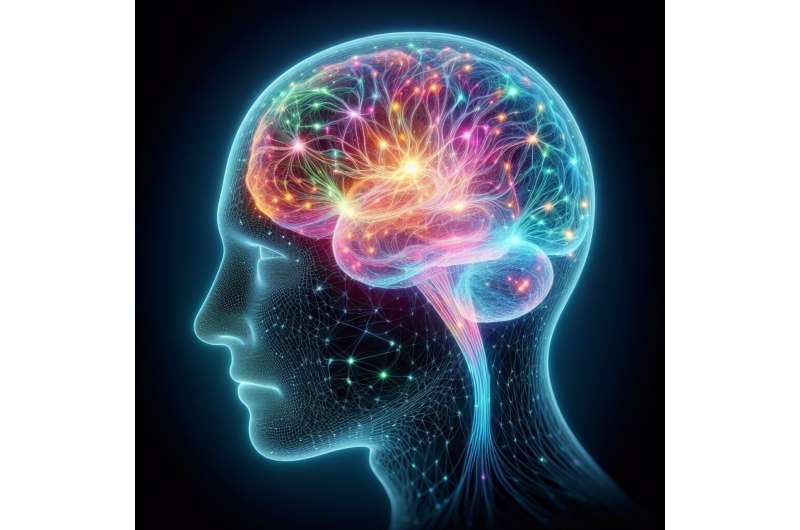
Understanding the link between brain activity and behavior is among the core interests of neuroscience. Having a better grasp of this relationship will both help scientists understand how the brain works on a basic level and uncover what specifically goes awry in cases of neurological and psychological disease.
One way that researchers study this connection is through what are known as "brain states," patterns of neural activity or connectivity that emerge during specific cognitive tasks and are common enough in all individuals that they become predictable. Another, newer, approach is the study of brain waves, rhythmic, repetitive patterns of brain cell activity caused by synchronization across cells.
In a new paper, two Yale researchers propose that these two ways of thinking about brain activity may not represent separate events but two aspects of the same occurrence. Essentially, they suggest that though brain states are traditionally thought of as a snapshot of brain activity while waves are more like a movie, they're capturing parts of the same story.
Reconsidering these two approaches in this context, the researchers say, could help both fields benefit from the methods and knowledge of the other and advance our understanding of the brain.
Inspired by ecological, conservation, and Indigenous philosophies, Maya Foster, a third-year Ph.D. student in the Department of Biomedical Engineering, began pursuing this idea once she joined the lab of Dustin Scheinost, an associate professor in the Department of Radiology and Biomedical Imaging at Yale School of Medicine.
They are co-authors of the new paper , published in the journal Trends in Cognitive Sciences .
"We're arguing that rather than a brain state being one single thing, it's a collection of things, a collection of discrete patterns that emerge in time in a predictable way," she said.
In an interview with Yale News, Foster and Scheinost describe their proposal, and discuss how they might help researchers better understand the mysteries of the brain. This interview has been edited and condensed.
When did you start to consider these might be two aspects of the same occurrence?
Maya Foster: This has been on my mind even before I came to this lab. I was reading a book—"Erosion: Essays of Undoing" by Terry Tempest Williams—and she talks about how human-made machinery like helicopters cause vibrations that interrupt the natural pulse of things and cause things like rock formations to fall apart. Relatedly, there are a lot of Indigenous populations that believe everything has a pulse. And that got me thinking of the brain and whether we have some type of resonance or vibration that can be disrupted.
Then I joined this lab and Dustin let me experiment with a lot of different things. During one of those experiments, I input some data into a particular analysis and the outputs looked wave-like, and patterns emerged and then repeated. That took me down a whole rabbit hole of research literature and there was a lot of evidence for this idea of wave-like patterns in brain states.
What are the benefits of considering brain states as wave-like?
Foster: I think it creates a synergy where both sides—the brain state folks and the brain wave folks—benefit by learning from each other. And maybe the gaps in knowledge we have now when it comes to how brain activity relates to behavior might be filled by both groups working together.
Dustin Scheinost: Brain waves are newer in this field and they're complex. And any time you can take something new and relate it to something old—brain states in this case—it gives you a natural jumping off point. You can bring along everything you've learned so far. It's kind of like not throwing the baby out with the bath water. We don't need to drop brain states. They've informed us, but we can go in a different direction with them too.
How are you proposing researchers consider brain states and brain waves now?
Foster: Borrowing from physics, when you analyze light, it can be a discrete point—a photon—or it can be wave-like. And that's one way we're thinking about this. Similarly, depending on how you analyze brain states you can get static patterns, much like a photon, or you if you look at activity more dynamically, certain patterns start to occur more than once over time, kind of like a wave.
So we're arguing that rather than a brain state being one single thing, it's a collection of things, a collection of discrete patterns that emerge in time in a predictable way.
For example, if we measured four distinct patterns in brain activity as someone completed a cognitive task, a brain state could be that pattern one emerges, then pattern three, then two, then four, and that series might repeat over time. And when that repetition stops, that would be the end of that particular brain state.
You also draw comparisons to the musical technique known as 'fugue.' How does that fit with how you're visualizing these phenomena?
Foster: I'm a music person, so that's where this came from. In a fugue, you have a basic melody and then that melody emerges later in the music in different forms and formats. For instance, the melody will play, then some other music comes in, then the melody returns with the same rhythm and time sequence but maybe it's in a different key.
Fugues are cyclical and wave-like, they have distinct groups of notes, and there's a systematic repetition and sometimes layering of the main melody. We're arguing that brain states are also wave-like, have distinct patterns of brain activity, and display systematic repetition and layering of sequential patterns.
How are you hoping other researchers respond to your argument?
Foster: I would love feedback, honestly. There is evidence for what we're proposing but when it comes to implementing these ideas going forward, it would be helpful to have a conversation about how that might work. There are a lot of different strategies and I'm interested in a broader conversation about how we as researchers might go about studying this.
What's it like as someone who has been in this field for a while to have a student come in with a new idea like this?
Scheinost: You can get set in your ways as a researcher and you need new ideas, new creativity. Sometimes they may sound outlandish when you first hear them. But then you ruminate, and they start to take form. And it's fun. That's really where the fun of this job is, to hear new ideas and see how people discuss and debate them.
Explore further
Feedback to editors

Transdifferentiation with RNA sequencing aids diagnosis of genetic disorders
43 minutes ago

Researchers develop statistical method for genetic mapping of autoimmune diseases

New atlas of mRNA variants captures inner workings of the brain
2 hours ago

Study suggests light physical activity as a child is key to reducing risk of type 2 diabetes

No link between acetaminophen use during pregnancy and cognitive risks, says large sibling study
3 hours ago

Nurses cite employer failures as their top reason for leaving

Researchers compile detailed catalog of bacteria living in cancer metastases

How childhood stress influences gene activity and increases the risk of mental illness
4 hours ago

Adding vaccine to immunotherapy for liver cancer shows promise in early trial

Study uncovers multiple lineages of stem cells contributing to neuron production
Related stories.

New algorithm disentangles intrinsic brain patterns from sensory inputs
Feb 14, 2024

Alpha, beta, theta: What are brain states and brain waves? And can we control them?
Dec 25, 2023

How the brain encodes social network structure
Apr 26, 2021

Fully understanding the human brain may not be a pipe dream
Aug 14, 2023

Scientists discover spiral-shaped signals that organize brain activity
Jun 15, 2023

What marsupials can teach us about brain development
May 23, 2023
Recommended for you

Brain vesicles found to contain selectively packaged, full-length mRNA

New insights into cholesterol dynamics shed light on neurodegenerative disease
5 hours ago

New technique sheds light on memory and learning
Apr 8, 2024

Researchers develop neural decoding that can give back lost speech
Let us know if there is a problem with our content.
Use this form if you have come across a typo, inaccuracy or would like to send an edit request for the content on this page. For general inquiries, please use our contact form . For general feedback, use the public comments section below (please adhere to guidelines ).
Please select the most appropriate category to facilitate processing of your request
Thank you for taking time to provide your feedback to the editors.
Your feedback is important to us. However, we do not guarantee individual replies due to the high volume of messages.
E-mail the story
Your email address is used only to let the recipient know who sent the email. Neither your address nor the recipient's address will be used for any other purpose. The information you enter will appear in your e-mail message and is not retained by Medical Xpress in any form.
Newsletter sign up
Get weekly and/or daily updates delivered to your inbox. You can unsubscribe at any time and we'll never share your details to third parties.
More information Privacy policy
Donate and enjoy an ad-free experience
We keep our content available to everyone. Consider supporting Science X's mission by getting a premium account.
E-mail newsletter
Search form
New state of mind: rethinking how researchers understand brain activity.

(© stock.adobe.com)
Understanding the link between brain activity and behavior is among the core interests of neuroscience. Having a better grasp of this relationship will both help scientists understand how the brain works on a basic level and uncover what specifically goes awry in cases of neurological and psychological disease.
One way that researchers study this connection is through what are known as “brain states,” patterns of neural activity or connectivity that emerge during specific cognitive tasks and are common enough in all individuals that they become predictable. Another, newer, approach is the study of brain waves, rhythmic, repetitive patterns of brain cell activity caused by synchronization across cells.
In a new paper, two Yale researchers propose that these two ways of thinking about brain activity may not represent separate events but two aspects of the same occurrence. Essentially, they suggest that though brain states are traditionally thought of as a snapshot of brain activity while waves are more like a movie, they’re capturing parts of the same story.
Reconsidering these two approaches in this context, the researchers say, could help both fields benefit from the methods and knowledge of the other and advance our understanding of the brain.
Inspired by ecological, conservation, and Indigenous philosophies, Maya Foster, a third-year Ph.D. student in the Department of Biomedical Engineering, began pursuing this idea once she joined the lab of Dustin Scheinost , an associate professor in the Department of Radiology and Biomedical Imaging at Yale School of Medicine.
They are co-authors of the new paper , published April 5 in the journal Trends in Cognitive Sciences.
“ We’re arguing that rather than a brain state being one single thing, it’s a collection of things, a collection of discrete patterns that emerge in time in a predictable way,” she said.
In an interview with Yale News, Foster and Scheinost describe their proposal, and discuss how they might help researchers better understand the mysteries of the brain. This interview has been edited and condensed.
When did you start to consider these might be two aspects of the same occurrence?
Maya Foster: This has been on my mind even before I came to this lab. I was reading a book — “Erosion: Essays of Undoing” by Terry Tempest Williams — and she talks about how human-made machinery like helicopters cause vibrations that interrupt the natural pulse of things and cause things like rock formations to fall apart. Relatedly, there are a lot of Indigenous populations that believe everything has a pulse. And that got me thinking of the brain and whether we have some type of resonance or vibration that can be disrupted.
Then I joined this lab and Dustin let me experiment with a lot of different things. During one of those experiments, I input some data into a particular analysis and the outputs looked wave-like, and patterns emerged and then repeated. That took me down a whole rabbit hole of research literature and there was a lot of evidence for this idea of wave-like patterns in brain states.
What are the benefits of considering brain states as wave-like?
Foster: I think it creates a synergy where both sides — the brain state folks and the brain wave folks — benefit by learning from each other. And maybe the gaps in knowledge we have now when it comes to how brain activity relates to behavior might be filled by both groups working together.
Dustin Scheinost: Brain waves are newer in this field and they’re complex. And any time you can take something new and relate it to something old — brain states in this case — it gives you a natural jumping off point. You can bring along everything you’ve learned so far. It’s kind of like not throwing the baby out with the bath water. We don’t need to drop brain states. They’ve informed us, but we can go in a different direction with them too.
How are you proposing researchers consider brain states and brain waves now?
Foster: Borrowing from physics, when you analyze light, it can be a discrete point — a photon — or it can be wave-like. And that’s one way we’re thinking about this. Similarly, depending on how you analyze brain states you can get static patterns, much like a photon, or you if you look at activity more dynamically, certain patterns start to occur more than once over time, kind of like a wave.
So we’re arguing that rather than a brain state being one single thing, it’s a collection of things, a collection of discrete patterns that emerge in time in a predictable way.
For example, if we measured four distinct patterns in brain activity as someone completed a cognitive task, a brain state could be that pattern one emerges, then pattern three, then two, then four, and that series might repeat over time. And when that repetition stops, that would be the end of that particular brain state.
You also draw comparisons to the musical technique known as “fugue.” How does that fit with how you’re visualizing these phenomena?
Foster: I’m a music person, so that’s where this came from. In a fugue, you have a basic melody and then that melody emerges later in the music in different forms and formats. For instance, the melody will play, then some other music comes in, then the melody returns with the same rhythm and time sequence but maybe it’s in a different key.
Fugues are cyclical and wave-like, they have distinct groups of notes, and there’s a systematic repetition and sometimes layering of the main melody. We’re arguing that brain states are also wave-like, have distinct patterns of brain activity, and display systematic repetition and layering of sequential patterns.
How are you hoping other researchers respond to your argument?
Foster: I would love feedback, honestly. There is evidence for what we’re proposing but when it comes to implementing these ideas going forward, it would be helpful to have a conversation about how that might work. There are a lot of different strategies and I’m interested in a broader conversation about how we as researchers might go about studying this.
What’s it like as someone who has been in this field for a while to have a student come in with a new idea like this?
Scheinost: You can get set in your ways as a researcher and you need new ideas, new creativity. Sometimes they may sound outlandish when you first hear them. But then you ruminate, and they start to take form. And it’s fun. That’s really where the fun of this job is, to hear new ideas and see how people discuss and debate them.
Health & Medicine
Media Contact
Fred Mamoun: [email protected] , 203-436-2643

Sun spot: Hundreds watch the solar eclipse at Yale’s observatory

Michal Beth Dinkler named next Head of Timothy Dwight College

Patrick Vaccaro appointed Irénée du Pont Professor of Chemistry

FDA authorizes COVID drug Pemgarda for high-risk patients
- Show More Articles

Artificial Intelligence
Ai accelerates behavioral science and neuroscience research, carnegie mellon university researchers use machine learning to study behavior..
Posted September 1, 2021 | Reviewed by Kaja Perina
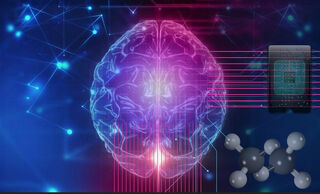
Scientific discoveries in the fields of behavioral science and neuroscience often require the time-consuming and challenging task of identifying, classifying, and predicting outcomes from copious amounts of complex data. A study published today in Nature Communications shows how artificial intelligence (AI) machine learning can be used to identify and predict behaviors to speed up neuroscience and behavioral science research.
“Studying naturalistic animal behavior remains a difficult objective,” wrote the Carnegie Mellon research team of Eric Yttri and Alexander Hsu who authored the study. "Recent machine learning advances have enabled limb localization; however, extracting behaviors requires ascertaining the spatiotemporal patterns of these positions."
Using AI machine learning, the scientists were able to provide robust behavioral and kinematic data analysis that may help speed up research studies to understand pain, obsessive-compulsive disorder (OCD), and movement disorders in the future.
“ Obsessive compulsive disorder research in particular has long sought improved identification and quantification of grooming behavior,” the scientists wrote. “Pain and itch research has also sought to achieve similar ends. These results point to the need for a deeper comprehension of the composite kinematics forming those actions, as many current methods are limited to only the duration of such actions.”
The scientists trained their machine learning algorithm using data from videos of six laboratory mice. Using open-source pose estimation software, the researchers filtered the video frames into pose. The pose relationships were extracted from the estimates and used as input data for unsupervised clustering to assign labels.
“To provide a link from poses to actions and their kinematics, we developed B-SOiD - an open-source, unsupervised algorithm that identifies behavior without user bias ,” wrote the researchers. B-SOiD stands for Behavioral Segmentation of Open field in DeepLabCut.
The researchers used a random forest classifier design to map relationships between high-dimensional poses to behaviors. Random forest is a widely used AI machine learning algorithm with an ensemble method architecture consisting of many small decision trees called estimators that produce predictions used to improve the overall predictive accuracy of the algorithm.
“The random forest classifier is well-suited for high-dimensional feature training and has been shown to predict low-dimensional representation of high-dimensional features well, particularly compared to potential alternatives like MLP or SVM,” the researchers wrote.
The trained random forest classifier has learned the relationships between input pose relationships to label mapping. As a result, the researchers report that the behavior prediction based on the new spatiotemporal features is quicker and has higher temporal resolution.
Copyright © 2021 Cami Rosso All rights reserved.

Cami Rosso writes about science, technology, innovation, and leadership.
- Find a Therapist
- Find a Treatment Center
- Find a Psychiatrist
- Find a Support Group
- Find Teletherapy
- United States
- Brooklyn, NY
- Chicago, IL
- Houston, TX
- Los Angeles, CA
- New York, NY
- Portland, OR
- San Diego, CA
- San Francisco, CA
- Seattle, WA
- Washington, DC
- Asperger's
- Bipolar Disorder
- Chronic Pain
- Eating Disorders
- Passive Aggression
- Personality
- Goal Setting
- Positive Psychology
- Stopping Smoking
- Low Sexual Desire
- Relationships
- Child Development
- Therapy Center NEW
- Diagnosis Dictionary
- Types of Therapy

Understanding what emotional intelligence looks like and the steps needed to improve it could light a path to a more emotionally adept world.
- Coronavirus Disease 2019
- Affective Forecasting
- Neuroscience
Articles on Behavioural neuroscience
Displaying all articles.

Bees can learn higher numbers than we thought – if we train them the right way
Adrian Dyer , RMIT University ; Jair Garcia , RMIT University , and Scarlett Howard , Université de Toulouse III – Paul Sabatier

Are you a pervert? Challenging the boundaries of sex
Gonzalo R. Quintana Zunino , Concordia University

Wizard of Odds or Even Steven? The science of gambling fallacies
Ricky van der Zwan , Southern Cross University

Does the unconscious know when you’re being lied to?
Tom Stafford , University of Sheffield
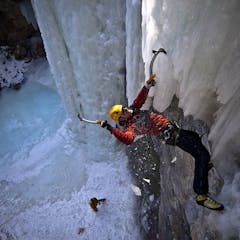
If at first you don’t succeed … part of your brain makes you try again
David Heslin, The Conversation

By studying animal behaviour we gain an insight into our own
Tom Smulders , Newcastle University

Delayed gratification – how the hippocampus helps us hold off
Michael Valenzuela , University of Sydney
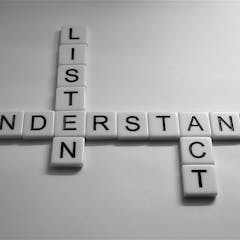
Study links social status to how we comprehend meaning
Alexia Attwood, The Conversation
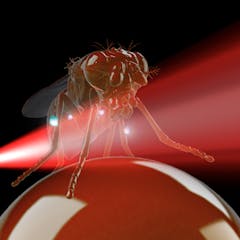
Watching a fly on a ball could help us understand its brain
Benjamin de Bivort , Harvard University
Related Topics
- Animal behaviour
- Animal intelligence
- Human evolution
- Invertebrates
- Lie Detection
- Neuroeconomics
- Neuroscience
Top contributors
Associate professor, University of Tasmania
Honorary (Professorial Fellow) at the Centre for Neuroscience, The University of Melbourne
Emeritus Professor, The National Centre for Youth Substance Use Research, The University of Queensland
Visiting Professor UNSW, UNSW Sydney
Senior lecturer, University of Adelaide
Associate Professor in Psychological Science, Western Sydney University
Professor, Southern Cross University
Lecturer in Psychology and Cognitive Science, University of Sheffield
Assistant Professor, Harvard University
Senior Lecturer, Centre for Behaviour and Evolution, Newcastle University
PhD, Behavioural Neuroscience, Concordia University
Associate Professor, Department of Physiology, Monash University
Researcher and analyst, Monash University
Lecturer, School of Biological Sciences, Monash University
- X (Twitter)
- Unfollow topic Follow topic

- © 2023
Virtual Reality in Behavioral Neuroscience: New Insights and Methods
- Christopher Maymon 0 ,
- Gina Grimshaw 1 ,
- Ying Choon Wu 2
School of Psychology, Victoria University of Wellington, Wellington, New Zealand
You can also search for this editor in PubMed Google Scholar
Swartz Center for Computational Neuroscience, University of California, San Diego, San Diego, USA
- Signals the potential for future advances with VR technology
- Provides practical guidelines for cognitive and behavioral neuroscientists
- Provides an interdisciplinary perspective on the current state of the art
Part of the book series: Current Topics in Behavioral Neurosciences (CTBN, volume 65)
6775 Accesses
19 Citations
17 Altmetric
- Table of contents
About this book
Editors and affiliations, bibliographic information.
- Publish with us
Buying options
- Available as EPUB and PDF
- Read on any device
- Instant download
- Own it forever
- Durable hardcover edition
- Dispatched in 3 to 5 business days
- Free shipping worldwide - see info
Tax calculation will be finalised at checkout
Other ways to access
This is a preview of subscription content, log in via an institution to check for access.
Table of contents (14 chapters)
Front matter, methods in virtual reality research, the promises and pitfalls of virtual reality.
- Christopher Maymon, Ying Choon Wu, Gina Grimshaw
Launching Your VR Neuroscience Laboratory
- Ying Choon Wu, Christopher Maymon, Jonathon Paden, Weichen Liu
Monitoring Brain Activity in VR: EEG and Neuroimaging
- Sebastian Ocklenburg, Jutta Peterburs
Eye Tracking in Virtual Reality
- Nicola C. Anderson, Walter F. Bischof, Alan Kingstone
VR to Study the Mind
Virtual reality for spatial navigation.
- Sein Jeung, Christopher Hilton, Timotheus Berg, Lukas Gehrke, Klaus Gramann
Virtual Reality for Vision Science
- Paul B. Hibbard
VR for Studying the Neuroscience of Emotional Responses
- Marta Andreatta, Markus H. Winkler, Peter Collins, Daniel Gromer, Dominik Gall, Paul Pauli et al.
VR for Cognition and Memory
- Nicco Reggente
Virtual Reality for Awe and Imagination
- Alice Chirico, Andrea Gaggioli
Using Extended Reality to Study the Experience of Presence
- Keisuke Suzuki, Alberto Mariola, David J. Schwartzman, Anil K. Seth
Applications of VR
Virtual reality for learning.
- David Checa, Andres Bustillo
VR for Pain Relief
- Marta Matamala-Gomez, Tony Donegan, Justyna Świdrak
Virtual Reality for Motor and Cognitive Rehabilitation
- Anuja Darekar
Virtual Reality Interventions for Mental Health
- Oswald D. Kothgassner, Adelais Reichmann, Mercedes M. Bock
This volume is an important first step toward establishing a standardised methodology for conducting research in VR. To this end, thevolume provides a wealth of practical advice for researchers who are new to the technology. This volume is authored by an interdisciplinary team of VR researchers including computer scientists, engineers, psychologists and neuroscientists. It highlights current research in the field to demonstrate how VR advances our understanding of the mind, while also providing groundbreaking solutions in applied domains.
- Virtual Reality
- VR Technology
- Insights and Methods
Christopher Maymon, Gina Grimshaw
Ying Choon Wu
Book Title : Virtual Reality in Behavioral Neuroscience: New Insights and Methods
Editors : Christopher Maymon, Gina Grimshaw, Ying Choon Wu
Series Title : Current Topics in Behavioral Neurosciences
DOI : https://doi.org/10.1007/978-3-031-42995-8
Publisher : Springer Cham
eBook Packages : Biomedical and Life Sciences , Biomedical and Life Sciences (R0)
Copyright Information : The Editor(s) (if applicable) and The Author(s), under exclusive license to Springer Nature Switzerland AG 2023
Hardcover ISBN : 978-3-031-42994-1 Published: 29 September 2023
Softcover ISBN : 978-3-031-42997-2 Due: 30 October 2023
eBook ISBN : 978-3-031-42995-8 Published: 28 September 2023
Series ISSN : 1866-3370
Series E-ISSN : 1866-3389
Edition Number : 1
Number of Pages : X, 387
Number of Illustrations : 70 b/w illustrations, 30 illustrations in colour
Topics : Neurosciences , Experimental Psychology , Experimental Psychology
Policies and ethics
- Find a journal
- Track your research

New Research Suggests Cerebellum May Play Important Role in Autism
Nimh grant will fund studies on how autism risk gene impacts a crucial, but long-overlooked brain area.
- by Douglas Fox
- April 02, 2024
Researchers in the College of Biological Sciences have received a grant to study the role of the cerebellum in autism. “ We need a more holistic understanding of the brain circuits that drive this disorder , ” says Alex Nord , an associate professor of neurobiology, physiology and behavior (NPB); psychiatry and behavioral sciences; and a core faculty member at the Center for Neuroscience (CNS). “ The cerebellum is a key component that has been largely overlooked until recently . ”
Nord partnered with Diasynou Fioravante , also an associate professor of NPB and core faculty member at CNS, and received an R21 grant from the National Institute of Mental Health (NIMH). Announced in November, it will provide $435,000 of funding over the next two years.
With this grant, they will study how a potent autism risk gene, called chromodomain helicase DNA binding protein 8 ( Chd8 ), alters function in the cerebellum, which plays a crucial role in physical movement, and how this drives autism-like behaviors. Their research ties together two emerging trends in autism research.

Surprising discoveries in autism
Researchers long believed that autism involved genes that regulate communications between neurons — especially the synapses, where neurotransmitters carry signals from one neuron to another. But starting in the early 2010s, genetic studies revealed that many autism risk genes actually play a very different role: they encode proteins that reside far from the synapses — in the cell ’s nucleus, where the DNA is located, and regulate the activity of hundreds of other genes.
“ This was a huge surprise , ” says Nord. Chd8 , a typical member of this group, regulates how tightly DNA is packaged and coiled with proteins. As such, it may regulate many genes that govern the formation and function of synapses.
At the same time, another major area of study is advancing the field of autism research. Scientists had assumed that autism was driven by changes in the cerebral cortex, which performs all sorts of tasks, such as recognizing words and faces, and “executive function” — controlling working memory, guiding our spotlight of attention, and making choices — such as whether to act on the impulse to withdraw one's hand when an unfamiliar dog approaches.
But in 2012, researchers reported that mice with mild abnormalities in the cerebellum developed behaviors that resembled autism in humans, such as reduced social interaction with other mice. “ The autism field was really rocked by this discovery , ” says Fioravante.
People had previously believed that the cerebellum mainly coordinates body movements such as walking, speaking, and typing. “ When you damage the cerebellum, it causes profound movement problems, and this probably made it difficult to see more subtle changes in behavior , ” says Fioravante.
But she points out that the cerebellum has significant connections with brain structures like the prefrontal cortex, which guides executive function, and limbic system, which regulates sociability, mood and emotions . People with cerebellar injuries often show autism-like changes in their emotions and social interactions.
Then in 2017, Nord and his colleagues reported a discovery that tied together these two intriguing threads : they found that the autism risk gene Chd8 helped guide the development of the cerebellum. Mice with one non-functioning copy of the gene had smaller cerebella.
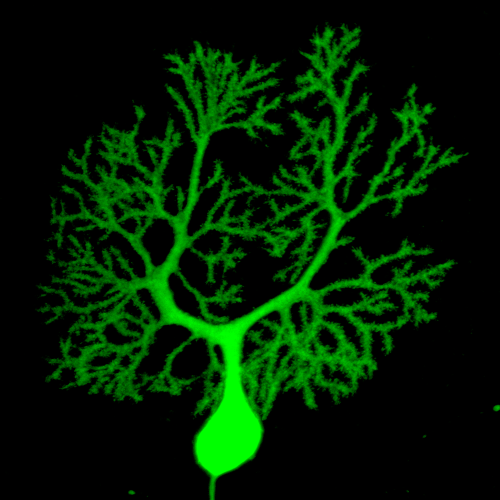
That discovery “ planted the idea of our project , ” says Fioravante. She and Nord sat in offices next door to one another. And while Nord studied Chd8 , she worked on the cerebellum. In 2021 they applied for, and received, an earlier NIMH grant, to study how Chd8 influences the development of the cerebellum in mice, before and shortly after birth. Fioravante also received a pilot grant from the Behavioral Health Center of Excellence at UC Davis that launched Chd8 cerebellar studies in adult mice.
Working on these earlier grants from 2021 to 2023, they found that Chd8 mutations in mice triggered changes in the cerebellum and in behavior that resemble what is seen in humans with autism. For example, mice with a mutant copy of the gene had impaired social cognition. While regular mice prefer to explore and interact with mice they have not met before, mice with mutant Chd8 had more restricted interests — preferring mice or objects that they already knew.
New targets for treatment
With the new grant, Fioravante and Nord will pick up where they left off. In adult mice with normally developed cerebella, they will use genetic tools to disrupt Chd8 . They will examine how loss of Chd8 alters gene expression and function in neurons of the cerebellum, and how the connections between it and other brain areas change. They will also study whether disruption of Chd8 causes autism-like behavioral changes, such as reduced social interaction with other mice, or reduced interest in novelty. Cesar Canales, an assistant professional researcher in NPB, who has expertise in cerebellar anatomy, will take part in these studies.
These experiments “will help shed light on the totality of what the cerebellum does , ” says Fioravante — getting beyond the traditional narrow view that it mainly coordinates movement. The team also hopes to uncover new strategies for treating autism.
Although autism involves early brain development, the condition usually isn ’t diagnosed until children are years older — when the abnormal brain connections are already established, potentially making treatment difficult.
In these upcoming studies, Nord and Fioravante hope to explore whether the treatment window for autism can be extended. “ If we see changes in behavior or neural circuits when Chd8 is disrupted in the developed cerebellum, then we know there is a treatment target , ” says Nord.
These studies could also shed light on schizophrenia and obsessive-compulsive disorder, which occur more frequently in people with mutations in this gene, says Nord: “ It ’s a molecular handle , an entry point into the pathophysiology of these other complex diseases . ”
Media Resources
- Douglas Fox is a freelance science writer based in the Bay Area.
- Fioravante Lab
- Germline Chd8 haploinsufficiency alters brain development in mouse ( Nature Neuroscience 2017)
- Cognitive-affective functions of the cerebellum ( The Journal of Neuroscience 2023)
Primary Category
Thank you for visiting nature.com. You are using a browser version with limited support for CSS. To obtain the best experience, we recommend you use a more up to date browser (or turn off compatibility mode in Internet Explorer). In the meantime, to ensure continued support, we are displaying the site without styles and JavaScript.
- View all journals
Neuroscience articles from across Nature Portfolio
Neuroscience is a multidisciplinary science that is concerned with the study of the structure and function of the nervous system. It encompasses the evolution, development, cellular and molecular biology, physiology, anatomy and pharmacology of the nervous system, as well as computational, behavioural and cognitive neuroscience.
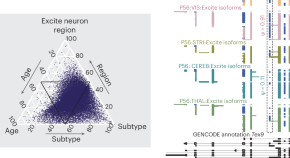
Widespread changes in alternative splicing in developing and adult mouse brain
In the first comprehensive mRNA isoform atlas of the developing and adult mouse brain, we discover that region and age influence the isoform repertoire of cell subtypes. We link peak cell type regulation to the critical development period and report attenuated levels in adulthood.
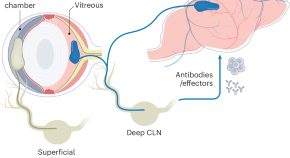
An immunological window to the brain
The eye and the brain are both recognized as immune-privileged sites. Research now indicates that responses in the eye mirror those in the central nervous system (CNS), offering major implications for the treatment of CNS cancers and infections.
- James T. Walsh
- Jonathan Kipnis
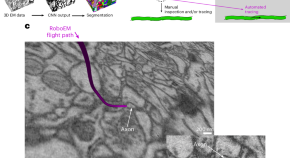

Building an automated three-dimensional flight agent for neural network reconstruction
RoboEM, an artificial intelligence (AI)-based flight agent, automatically steers through three-dimensional electron microscopy (3D-EM) images of brain tissue to follow neurites. RoboEM substantially improves state-of-the-art automated reconstructions, eliminating manual proofreading needs in complex connectomic analysis problems and paving the way for high-throughput, cost-effective, large-scale mapping of neuronal networks — connectomes.
Related Subjects
- Auditory system
- Blood–brain barrier
- Cell death in the nervous system
- Cellular neuroscience
- Circadian rhythms and sleep
- Cognitive ageing
- Cognitive neuroscience
- Computational neuroscience
- Development of the nervous system
- Diseases of the nervous system
- Epigenetics in the nervous system
- Feeding behaviour
- Genetics of the nervous system
- Glial biology
- Gliogenesis
- Gustatory system
- Ion channels in the nervous system
- Learning and memory
- Molecular neuroscience
- Motor control
- Myelin biology and repair
- Neural ageing
- Neural circuits
- Neuro–vascular interactions
- Neurogenesis
- Neuroimmunology
- Neuronal physiology
- Neurotrophic factors
- Oculomotor system
- Olfactory system
- Peripheral nervous system
- Regeneration and repair in the nervous system
- Sensorimotor processing
- Sensory processing
- Sexual behaviour
- Social behaviour
- Social neuroscience
- Somatosensory system
- Spine regulation and structure
- Stem cells in the nervous system
- Stress and resilience
- Synaptic plasticity
- Synaptic transmission
- Transporters in the nervous system
- Visual system
Latest Research and Reviews

Brownian processes in human motor control support descending neural velocity commands
- Federico Tessari
- James Hermus
- Neville Hogan
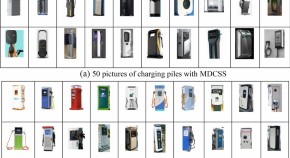
The effect analysis of shape design of different charging piles based on Human physiological characteristics using the MF-DFA
- Yusheng Zhang
- Yaoyuan Kang
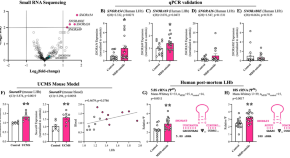
SNORA69 is up-regulated in the lateral habenula of individuals with major depressive disorder
- Haruka Mitsuhashi
- Gustavo Turecki

Activation of lateral preoptic neurons is associated with nest-building in male mice
- Natsuki Tagawa
- Hiromasa Funato
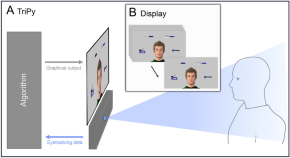
Impaired recognition of interactive intentions in adults with autism spectrum disorder not attributable to differences in visual attention or coordination via eye contact and joint attention
- Mathis Jording
- Kai Vogeley
Traumatic spinal cord injury in South Korea for 13 years (2008–2020)
- Sung Hyun Noh
- Eunyoung Lee
- Pyung Goo Cho
News and Comment
Water restriction still has a place.
- Pamela Reinagel
Restoring sensation to prosthetics
- Henrietta Howells
HDAC3 stokes microglia in stroke
- George Andrew S. Inglis
Pushing the bounds on dimensionality
- Luis A. Mejia
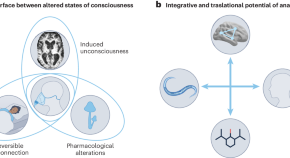
What anaesthesia reveals about human brains and consciousness
The combination of general anaesthesia and neuroimaging holds unique potential for catalysing integrative and translational discovery about human brains and consciousness. By spanning molecular, cognitive and clinical neuroscience, anaesthesia provides a bridge from molecules to mind across species.
- Andrea I. Luppi
Quick links
- Explore articles by subject
- Guide to authors
- Editorial policies
An official website of the United States government
The .gov means it’s official. Federal government websites often end in .gov or .mil. Before sharing sensitive information, make sure you’re on a federal government site.
The site is secure. The https:// ensures that you are connecting to the official website and that any information you provide is encrypted and transmitted securely.
- Publications
- Account settings
Preview improvements coming to the PMC website in October 2024. Learn More or Try it out now .
- Advanced Search
- Journal List
- Front Psychol
Neuroscience-based psychotherapy: A position paper
Davide maria cammisuli.
1 Department of Psychology, Catholic University, Milan, Italy
Gianluca Castelnuovo
2 Psychology Research Laboratory, Istituto Auxologico Italiano IRCCS, Milan, Italy
In the recent years, discoveries in neuroscience have greatly impacted upon the need to modify therapeutic practice starting from the evidence showing some cerebral mechanisms capable of coping with mental health crisis and traumatic events of the individual's life history by redesigning the narrative plot and the person's sense of the Self. The emerging dialogue between neuroscience and psychotherapy is increasingly intense and modern psychotherapy cannot ignore the heritage deriving from studies about neuropsychological modification of memory traces, neurobiology of attachment theory, cognitive mechanisms involved in psychopathology, neurophysiology of human empathy, neuroimaging evidence about psychotherapeutic treatment, and somatoform disorders connecting the brain and the body. In the present article, we critically examined sectorial literature and claimed that psychotherapy has to referred to a neuroscience-based approach in order to adopt the most tailored interventions for specific groups of patients or therapy settings. We also provided recommendations for care implementation in clinical practice and illustrated challenges of future research.
1. Introduction
In the second half of the 19th century, schools in psychotherapy were born according to different epistemological constructs and methods, with the aim of removing trauma, modifying symptoms of affective nature, and promoting the development of a healthy personality (Janiri et al., 2009 ). Psychotherapy can be defined in relation to three main elements, that is a helping relationship established after the parent–child one, the creation of a secure base from which the therapist influences the patient through psychological techniques, and a patient who has the capacity to benefit from such an experience (Strupp, 1978 ). However, Freud himself first recognized the limit of the only adoption of a pure introspective approach, stating that the deficiency in [our] description would probably vanish if we were already in a position to replace the psychological terms by physiological or chemical ones (Freud, 1920 , p. 60). He first endeavored to establish the restraint of the “ talking cure ” and to clarify that the progress of what we currently name as “neuroscience” would have achieved the result to bridge this gap (Solms and Turnbull, 2018 ).
With the advent of neuroscience, a highly integrated discipline, as well as astrophysics, knowledge in the fields of molecular and cellular biology, biochemistry, neurophysiology, neuroradiology, and general and experimental psychology, has harmoniously merged, creating a body of evidence of which psychotherapy has to benefit. One of the most fruitful experiences that determined a new approach to scientific research in brain science was that of Francis O. Schmitt, who set up the Neuroscience Research Program (NRP) at the Massachusetts Institute of Technology (MIT) in 1962. He intended the NRP as a research field connecting physical, biological, and neural science for a better understanding of the liaison between mind, brain, and behavior (Adelman, 2010 ). Neuroscience grew rapidly from this time point on as scientists from all areas of the life sciences rapidly moved into the field. This process culminated with the foundation of the Society for Neuroscience (SfN) in 1969 (Adelman, 2010 ).
An important turnover in the process of the emerging dialogue between psychotherapy and neuroscience was undoubtedly the scientific contribution of Kandel ( 1998 , 2012 ), who went on to the Nobel Prize for medicine/physiology in 2000 by providing a breakthrough perspective on how biology has influenced modern psychiatry, especially on how memory and learning processes can explain behavior and its disorder and implications of the neurobiological research in psychotherapy. Kandel's description of the influence of culture on genetics and of the mechanism of “reconsolidation” of memory emphasizes the importance of psychotherapy for mental disorders. Particularly, practicing psychotherapy as a strategic and significant influence on the patient's living environment can be particularly effective in modeling gene expression and promoting behavioral modifications (Etkin et al., 2005 ).
Beyond different treatment approaches (i.e., psychoanalysis and psychodynamic therapies, cognitive–behavioral therapy, humanistic therapy, family and system psychotherapy, interpersonal psychotherapy, and integrative or holistic therapies) (Roth and Fonagy, 2005 ), psychotherapy involves common elements, such as verbal and non-verbal exchanges as interactions between therapist and patient, therapeutic alliance, empathy, resilience to trauma, cognitive restructuring, and new learning (Gabbard, 2009 ) that we currently believe psychotherapists have to read under the magnifying glass of neuroscience. Currently, on at least six major study areas, some of which already pointed out in Janiri et al. ( 2009 ), neurosciences have provided valuable contributions to the understanding of the neurobiological substrate of brain changes useful for psychotherapy practice: memory of trauma, neurobiological correlates of human attachment, mirror neurons system and theory of mind (ToM), brain modifications after psychotherapeutic treatment, and somatic symptoms and disorders. To let the scientific audience better focus on these areas, we provided a summary table for each section of the manuscript reporting major recommendations for mental health practitioners. We firmly affirm that psychotherapists in the modern era can no longer ignore discoveries in the field of neuroscience and have to learn from them in order to implement their clinical practice.
2. Psychotherapy of traumatic memories
There are organic molecular mechanisms that are fundamental for the establishment of long-term memories. For instance, the corticosterone hormone, which corresponds to the cortisol in humans, released after a stressor input in animals, rapidly interacts with growth factors produced in the brain, in particular with the brain-derived neurotrophic factor (BDNF), a neurotrophin essential for long-term synaptic plasticity (Alberini, 2009 ). These mechanisms occur in the medial temporal lobe, specifically in the hippocampus, which plays a central part in long-term memory formation (Johnston and Amaral, 2004 ). Peripheral BDFN levels are lower in psychiatric disorders (Boulle et al., 2012 ), and a recent systematic review has shown that BDNF seems to present variations after psychotherapy, especially in patients with bulimia, post-traumatic stress disorder (PTSD), insomnia, and borderline personality disorder, with a reduction in symptomatology (Claudino et al., 2020 ).
Memory represents a system of brain networks that presides over different functionally coordinated and anatomically independent cognitive mechanisms sharing the ability to store information (Squire, 2004 ). Particularly, explicit (or declarative) memory is involved in the psychotherapeutic process. As reported in Freud-Fliess Letters (1887–1904), Our psychic mechanism is formed, is created through a process of stratifications. The material that is present as memory or trace of memory undergoing continuous reconstruction, a renewal with respect to the present, to new circumstances. Memory is not present once, it does not remain as a single trace but continues to renew itself (Albertini, 2014 ). Research in neuroscience has documented that the storage of memories is allowed in relation to a certain level of stress (Schwabe et al., 2012 ). When the stress level is relatively moderate, memories are formed and retained, and when the stress becomes too prolonged or intense, it generates a negative effect on memories that can even be lost, like in the case of trauma (Alberini, 2011 ). Moreover, regardless of its valence (i.e., positive vs . negative), the intensity of an emotion experienced during an original event increases the likelihood that the memory will be recalled later. Scientific evidence has shown that an increased arousal results in a more augmented physiological interaction between the amygdala and the hippocampus, leading to an enhanced encoding and long-term consolidation of information (Lane et al., 2015 ).
Starting from these findings, it is possible to advance hypotheses on the mechanisms that take place in the room of the psychotherapist when memories are remembered by the patient, precisely traumatic ones. Reconsolidation mechanisms would offer the opportunity to restore memories with a different emotional level, that is, lower stress intensity and greater control. At a molecular level, memory consolidation of an experienced event (i.e., long-term memory) is formed as synaptic connections within a set of neurons (Gallistel and Matzel, 2013 ). To this end, an experienced event induces a neuronal depolarization and an influx of intracellular Ca 2+ , which initiates a downstream molecular cascade that results in the transcription and translation of plasticity-related proteins (PRPs) inducing changes in neuronal networks as remodeled synaptic connections (Sekeres et al., 2017 ). The activity among synaptic connections leads to the development of “memory engram” requiring a period of quiescence to be stabilized that can be potentially interrupted by protein-synthesis inhibition or interference from new learning (Sekeres et al., 2017 ). The multiple trace theory (MTT) (Nadel and Moscovitch, 1997 ; Moscovitch and Nadel, 1999 ) offers insight into how the repeated recollection of prior events can transform memory representations. Accordingly, the establishment of long-term memory involves a long interaction between hippocampal regions of the medial temporal lobes and medial prefrontal cortex. MTT proposes that each time an episodic memory is elicited by active retrieval or recollection, an update trace is created, incorporating information from the old trace and new recall. According to Albertini ( 2014 ), remembering with the psychotherapist creates the possibility of associating old reactivated memories with new ones moving from painful experiences faced during treatment. In the presence of new elements and of the support given by the therapist, restored memory has different qualities (i.e., less traumatic and emotionally intense). MTT supports that memories are not the same record of the original event but undergo updating and reshaping as they age and when they are altered by recollection during psychotherapy (Lane et al., 2015 ). The psychotherapeutic process promotes the possibility of associating old memories reactivated with new experiences of the present, thus soliciting a real behavioral change (Lane, 2020 ).
A number of psychotherapeutic techniques are considered in the emerging field of “memory therapeutics” including accelerated resolution therapy, rewind techniques, cognitive restructuring, and imagery modification. They aim to help the patient to feel less distressing sensations during memory reactivation, achieve a novel perspective about past negative events, rescript a different ending, and transform trauma using metaphors (Waits and Hoge, 2018 ). Since memory traces of traumatic events can be weakened, it is helpful to underline the influence of experiences made during psychotherapeutic treatment. Specifically, a distinct type of successful traumatic memory processing in PTSD psychotherapy includes threat processing by intensive imaginal memory retrieval through the support of the therapist for the reappraisal of the event, self-referential reflection on associated beliefs and emotions, and memories retelling (Ford, 2018 ).
- The BDNF—which is related to synaptic plasticity—seems to be low in psychiatric disorders;
- A moderate level of stress is necessary for memory storage;
- Memory reconsolidation supports the psychotherapeutic process for the creation of alternative ways of behaving; and
- Psychotherapy of traumatic memories consists of specific techniques in the case of PTSD.
3. Neurobiology of attachment therapy
According to Holmes ( 1993 ), attachment theory provides a psychological grounding that is applicable to all forms of psychotherapy in terms of a secure base (i.e., consistency, regularity, and reliability, a combination of warmth and firm boundaries), emersion of autobiographical competence (i.e., a secure attachment in therapy enables the patient to tell a different story about himself/herself), ability in processing affect (i.e., primitive emotions aroused in therapy are modulated by the attunement of the therapist and become manageable for the patient), and coping with loss (i.e., the expression of repressed pain or the modulation of unprocessed angry is an important part of each psychotherapeutic treatment). Attitudes and behavioral modifications of parents during the maternal gestational period, childbirth, breastfeeding, and in the first 3 years of the child's life imply a synergy between hormonal and neurochemical systems and lead to changes in brain structure and functionality, stimulating or inhibiting certain brain areas (Kim, 2016 ; Grumi et al., 2021 ). Early life experiences with the own caretakers have a huge impact on the child's brain development because repeated relationship patterns shape undifferentiated neurons into coherent firing networks supporting specific cognitive-affective brain structures (Schore, 2003 ; Kandel et al., 2013 ; Grawe, 2017 ; Siegel, 2020 ). The attachment relationship between the baby and the primary caretakers represents the link between the neurobiological programming of brain development and early care experiences. The child's bond to caregivers is implicated in the development of the right hemisphere and of specific brain areas (i.e., prefrontal cortex, orbitofrontal cortex, and limbic system) conditioning interpersonal relationships. In fact, such brain areas are involved in the processing and expression of emotional information and influence affective states' modulation and decoding of facial expressions, gestures, and prosody (Etkin et al., 2015 ). Remarkably, starting from a neuropsychoanalysis perspective, Schore ( 2022 ) contended that the right brain represents the psychobiological substrate of the unconscious human mind, as first described by Sigmund Freud, able to process emotional stimuli with implicit attention outside the role of awareness. Early relational experiences with caretakers are transferred into the psychotherapeutic process. Maternal and paternal mental illnesses in the perinatal period negatively impacting the interaction with the baby represent risk factors for the development of the parenting style because they may inhibit the abovementioned child's brain areas (Stein et al., 2014 ; Lautarescu et al., 2020 ). Conversely, when parental care contemplates the growth needs of the child, and neuronal networks conform to ensure positive responses to the environment, adults presenting with secure attachment show higher levels of reflective functioning and mature defenses that serve in better regulating affective states than those with insecure attachment (Tanzilli et al., 2021 ).
3.1. Perinatal psychotherapy
With the acronym Perinatal Mood and Anxiety Disorder (PMAD), a consensus in the scientific community has been obtained about the need to go beyond a focus on postpartum depression in the perinatal period toward a more comprehensive mother' symptomatology, including the spectrum of depressive and anxiety disorders, the obsessive–compulsive disorder, the PTSD and the puerperal psychosis (Byrnes, 2018 ). Furthermore, fathers may display anxiety disorders, somatic symptoms, hypochondria, substance abuse, and behavioral reactivity as maladaptive responses to paternity (Baldoni and Giannotti, 2020 ). To address these issues, perinatal psychotherapy assumes a fundamental part in caretakers' health regarding manifestations of mental suffering, starting from the multifactorial etiopathogenetic origin of maternal and parental mental illnesses, including neurobiological and hormonal modifications due to childbirth. The activation of the superior temporal sulcus, the amygdala, the right inferior frontal gyrus, and the insula is particularly sensitive to changes in hormonal levels involved in parental care, including augmentation in oxytocin and vasopressin levels in both parents and decrement in testosterone and estradiol for men (Abraham et al., 2014 ; Witteman et al., 2019 ). Interesting advances in psychotherapy research have recently highlighted the role of some hormones, such as cortisol and oxytocin, in mediating the relationship between the therapist and the patient, too. The cortisol, or the stress hormone representing the final product of the hypothalamic–pituitary–adrenal axis, is secreted in psychosocial stress contexts (Dickerson and Kemeny, 2004 ) and is capable of modulating the emotional experience influencing the affect. For instance, higher cortisol levels are associated with significant increases in negative affect in patients with major depressive disorder (MDD) (Booij et al., 2016 ). Levi et al. ( 2021 ) have studied the extent to which therapist's cortisol modulates patient's affect during psychodynamic psychotherapy of MDD by collecting salivary samples before and after specified sessions and data from patient's retrospective reports of in-session affect. The study provided initial evidence that the positive or negative affect of the patient is mediated by the therapist's changes in cortisol levels, supporting the importance of a special social support context built by the interpersonal relationship as an empathic response to the stress manifested by depressed patients. When in a safe situation, a person profoundly perceives his/her engagement, the oxytocin may also be released, supporting reciprocity, empathy, compassion, and synchronized behavior and characterizing parent–infant relationship (Schneiderman et al., 2012 ; Feldman, 2017 ). Oxytocin, as the neurohormone associated with care behavior, is implicated in the pathophysiology of MDD in humans (Engel et al., 2019 ), too, and it is a potential candidate for explaining treatment outcomes in relation to patient–therapist synchrony. Zilcha-Mano et al. ( 2020 ) have demonstrated that psychotherapeutic treatment is effective when patients suffering from MDD and therapists are biologically synchronized in oxytocin levels change, giving cutting-edge directions for future research. Starting from these preliminary findings, we think that psychotherapists working on perinatal mental health should reflect on how they build a supportive context and place themselves in sync with the patient since this can actually affect his/her affective state with significant implications for the child's care.
3.2. Couple psychotherapy
The integration of the attachment theory with neuroscience also poses a relevant application in the psychotherapy of couples about the dyadic affect regulation during treatment. The goal of neuroscience-based psychotherapy in this specific setting is to help each partner understand his/her part in altering the relationship, starting from personal attachment needs and psychophysiological reactions elicited in the communication with the significant other. By understanding how each partner's nervous reaction is affected by emotional reverberation triggered in the couple's interaction, partners can be treated in psychotherapy to recreate greater emotional control and a secure relationship base (Goldstein and Thau, 2004 ). When a couple's attachment schema is breached, partners may seek treatment, and psychotherapy plays a pivotal role in restoring a balance between them. Particularly, they should be encouraged to become progressively aware of their unconscious, implicit memories driving personal communication patterns (Schore, 2003 ). In this way, when partners get into a crisis and start psychotherapy, they are stimulated to progressively recognize the subcortical emotional system they have constructed during the love affair in order to rebuild it in a creative and positive manner. The therapist has to be able to normalize conflictual states by soliciting the couple to pay attention to autonomic responses to dangerous, frightening, and disruptive stimuli, which may be conveyed in the communication between partners, in order to control them and promote assertiveness.
- An attachment-based approach in psychotherapy looks at the connection between the infant's primary experiences and caregivers' responses;
- The development of the right hemisphere and of the prefrontal cortex, orbitofrontal cortex, and limbic system is influenced by such a relationship in childhood;
- Perinatal psychotherapists should pay attention to neurochemical and hormonal modifications in new parents;
- The awareness of the subcortical emotional system driving interpersonal communication between partners is a goal of neuroscience-based couple psychotherapy.
4. Cognitive psychopathology and psychotherapy
Cognitive defect varies to some extent in psychiatric disorders (Millan et al., 2012 ). However, it is still unclear how cognitive deficits may limit the ability of patients to actually attend psychotherapy or how cognitive problems may preclude a positive response to treatment. Cognitive symptoms such as those related to frontal lobe damage provoke a series of cognitive (e.g., disturbances in attention, planning, rigidity, inertia, criticism, control, inhibition, and decision-making) and emotional deficits (e.g., apathy, abulia, anhedonia, impulsiveness, behavioral inadequacy, aggression, and sociopathy) can greatly impact psychological interventions in patients with neurological disorders (Robinson et al., 2019 ) or acquired brain injury (Thøgersen et al., 2022 ). Psychotherapists have to be aware of executive dysfunction hindering the therapeutic process as an impairment that can strongly restrain its effect (Diamond, 2013 ; Cozolino, 2017 ), specifically in the case of particular approaches designed for older adults because of diminished specific frontal skills reported in elderly (Goodkind et al., 2016 ).
In this context, cognitive psychopathology offers an original contribution to psychotherapy for an in-depth understanding of psychiatric disturbances by making available the broad patrimony inherited from modern clinical neuropsychology (Timpano Sportiello, 2008 ). In particular, it can contribute to improving psychotherapeutic practice by refining the diagnosis and the differential diagnosis, offering relevant information to be provided to psychiatrists in the case of patients following combined treatments (i.e., neuropsychopharmacology), and enhancing the reliability of the prognostic judgment, also in relation to psychosocial rehabilitation interventions (e.g., behavioral skills training in psychiatric disorders). Cognitive dysfunction predicts psychosocial impairment; thus, its assessment is fundamental for rehabilitation purposes, especially in the case of severe psychiatric diseases (Etkin et al., 2022 ).
Disturbances in autobiographical memory, reality testing, interpretation of others, and fragmentation of a person's thought as an individual apart from everyone else are the consequences of the disruption of the “Default Mode Network” (DMN) (Raichle and Snyder, 2007 ; Andrews-Hanna et al., 2014 ; Mak et al., 2017 ) and are present in anxiety, depression, PSTD, and schizophrenia (Broyd et al., 2009 ; Cozolino, 2017 ). Neural areas, including the medial prefrontal cortex, the midline regions of the posterior cingulate cortex, and the precuneus region of the parietal cortex that turned on/off only to self-related task engaging of an individual, have been recently shown to support the DMN (Raichle and Snyder, 2007 ; Mak et al., 2017 ; Buckner and DiNicola, 2019 ). These findings have sustained the hypothesis that it may be the neuronal basis of the Self (i.e., personal and social awareness and ability in differentiated cognition and perception) (Faustino, 2022 ). Moreover, the dorsolateral prefrontal cortex, which is considered the neural circuit of working memory, also enables us to pay attention to something in the here-and-now (Siegel, 2006 ). Results are fundamental in psychotherapy—especially in Gestalt therapy—because its normal functioning permits to place the basis for the correct understanding of present feelings, emotions, and interpersonal reactions as they occur in the ongoing treatment sessions with no or little emphasis on past experiences. In a few words, it allows patients to concentrate on a new way of behaving built together with the psychotherapist.
The cognitive psychopathology perspective proposes that cognitive dysfunctions, which are closely related to emotional and relational processes, may contribute to the development, maintenance, and recurrence of psychiatric symptoms (Seron and Van der Linden, 2000 ). Psychotherapists must be exercised in drawing specific conclusions from a deep investigation of patients, including their cognitive evaluation, with the aim of taking into account particular mechanisms associated with mental pathology during the treatment course. Cognitive impairment consisting of dysfunction in working memory, attention/executive functions, processing speed, and visual and verbal learning represents a core feature of schizophrenia that is present in 62%−98% of patients and has been described in the first psychiatric episode, in healthy close relatives and in persons at high risk of developing the disease, and both in ongoing and remission phases (Morozova et al., 2022 ). Anxious symptoms produce significant deficits in attention control efficiency, especially in inhibition and switching (Shi et al., 2019 ). Symptoms frequently complained by depressed patients include attentional lability, concentration difficulties, dysmnesia (e.g., forgetfulness and word-finding difficulty), problem-solving, decision-making, judgment, and mental slowness (Richardson and Adams, 2018 ), whereas cognitive impairment in bipolar disorder is not limited to the affective episodes but persist in euthymic phases and mainly pertain attention, executive functions, learning, memory, and psychomotor speed (Cipriani et al., 2017 ). Patients with obsessive–compulsive disorder are significantly impaired in visuospatial memory, executive functions, verbal memory, and verbal fluency (Shin et al., 2014 ). Poor executive or “top-down regulation” of appetitive (i.e., reward, incentive salience) or aversive (i.e., stress, negative affect) processes is recognized as a basic impairment in behavioral addiction and a potentially relevant target for intervention, too (Ramey and Regier, 2019 ).
Cognitive remediation (CR)—sometimes referred to as cognitive enhancement therapy—is an intervention targeting cognitive deficits using scientific principles of learning in order to improve functional outcomes and rehabilitation of life skills (Wykes, 2018 ). CR has been conducted in various psychiatric disorders. Empirical evidence supports its efficacy in schizophrenia (Vita et al., 2021 ). CR techniques have also been applied to eating and weight disorders, attention-deficit hyperactivity disorders, mood disorders, anxiety disorders, substance use disorders, and autism spectrum disorders (Kim et al., 2018 ). We encourage psychotherapists to practice cognitive remediation techniques before treatment, especially when patients are so ill, in order to train them in promoting reflection on their thinking styles and exploring new strategies for everyday life. Such an approach may decrement the high dropouts rate from treatment, increase engagement in the therapeutic alliance (Tchanturia and Hambrook, 2010 ), and provide an opportunity for extending cognitive improvements to everyday functioning (Wykes, 2018 ) before discussing about feelings and emotions representing the core elements of the psychotherapeutic process.
We also affirm that the relationship with the psychotherapist does not only work because of the emotional bond with the patient but also when the practitioner is able to assign him/her adequate cognitive tasks in real life by taking into account the cognitive biases specifically characterizing personal cognitive profile. Only a correct weighting of what the patient is able to transfer from the therapeutic session to practical life experiences provides a concrete possibility of change. This becomes particularly true for cognitive–behavior psychotherapy (CBT) using homework assignments in order to maximize its effect (Kazantzis et al., 2005 ). Quite recently, a neuroscience-informed cognitive–behavioral approach (i.e., “The Waves of the New ABCs”) was developed to describe a continuous processing of internal and external stimuli that results in emotions, behaviors, and thoughts using the ABCDE model (Field et al., 2015 ), too.
Finally, with specific regard to depression, cognitive psychopathology can offer useful indications for psychotherapeutic treatment. We stress that the medial and orbital prefrontal regions play a key role in mediating the interaction between affective states and cognition: Depressed patients show facilitation of performance when responding to stimuli with a negative emotional tone (Elliott et al., 2002 ). Remarkably, mood-congruent memory (MCM) represents a psychological phenomenon where emotional memory is biased toward contents affectively congruent with a past or current mood (Faul and LaBar, 2022 ). Especially in the case of the MCM phenomenon, we recommend psychotherapists to operate through normalizing a deranged cognitive control process, which determines that information with an adverse emotional tone is recorded and recalled more successfully, contributing, in turn, to mood deflection. In the opinion of the authors, since psychophysiology consists a part of clinical neuroscience (Rabavilas and Papageorgiou, 2003 ), it appears advantageous to monitor psychophysiological variations associated with the MCM phenomenon through the ambulatory technological system (Loeffler et al., 2013 ), in order to allow the patient a more comprehensive appraisal of his/her emotional involvement in remembering evocative stimuli. Biofeedback instrumentation is able to identify maladaptive physiological responding and recognizing of mind-body connections can further facilitate psychotherapeutic progress.
- Cognitive deficits—especially executive ones—may preclude a successful psychotherapeutic treatment;
- The DMN may be recognized as the neuronal basis of the Self and its disruption is present in anxiety, depression, PSTD, and schizophrenia;
- Psychotherapists should assess their patients in terms of cognitive functioning according to the neuropsychological impaired profile typically reported in a specific psychiatric disease;
- CR therapy should be practiced by psychotherapists in the case of patients with serious illnesses prior to the treatment, with the final aim of a better therapy start;
- Homework assignments used in CBT should be formulated according to the potential cognitive deficits reported by patients in treatment; and
- Psychotherapists performing retrieval of memories during treatment should pay attention to the MCM phenomenon in the case of patients suffering from MDD.
5. The therapeutic process of human empathy
The mirror neuron system (MNS) represents a distributed network of brain cells that discharges when a primate performs an action or observes an action performed by a similar one (Jeon and Lee, 2018 ). The MSN plays an important role in imitative behavior, especially in deciphering others' actions. They were originally found in the macaque's brain on the ventral premotor cortex and inferior parietal lobule (IPL) (di Pellegrino et al., 1992 ; Gallese et al., 1996 ; Rizzolatti et al., 1996 ). Later neuroimaging studies revealed corresponding activations in some human brain districts, that is, the prefrontal motor cortex, the areas around the intraparietal sulcus, and the supratemporal sulcus (Jellema and Perrett, 2003 ; Puce and Perrett, 2003 ; Rizzolatti and Craighero, 2004 ; Fogassi et al., 2005 ). Remarkably, the IPL visuo-motor organization receiving visual information from the eyes and somatosensory information from the mouth, the hands, and the arms calls into question the evidence that it may represent the neural basis of the ability to understand the intentions of the actions performed by others (Fogassi et al., 2005 ).
Mirror neurons are not only involved in motor perception but also in interpersonal cognition (Baird et al., 2011 ), suggesting that people perceive emotions in others by activating the same emotional response in themselves (Gallese, 2003 ). Although no conclusive evidence for a “broken mirror theory” has been provided, it has been hypothesized that a neuropathological functioning of the brain structures associated with mentalization deficits may exist in some psychiatric disorders characterized by social-cognitive deficits such as schizophrenia (van der Weiden et al., 2015 ) and autism spectrum disorders (Cattaneo et al., 2007 ; Gallese et al., 2013 ). Deficits in social cognition would depend on the particular function investigated (e.g., social threat and facial recognition) and are associated with characteristic symptoms of specific personality disorders (Herpertz and Bertsch, 2014 ).
Beyond the MSN, the empathy-related processing largely used in the therapeutic relationship also involves the temporo-parietal areas, the prefrontal cortex, and the temporal poles as a neurobiological substrate of the ToM, referring to the metacognitive ability to infer another person's mental state from his/her experiences and behavior (Vogeley et al., 2001 ; Vogeley and Fink, 2003 ; Frith and Frith, 2007 ; Schulte-Rüther et al., 2007 ). Remarkably, the dorsolateral prefrontal cortex strongly participates in the empathic response through emotion regulation and perspective-taking, and such capacities are reflected by brain structural variations in psychotherapists. Domínguez-Arriola et al. ( 2022 ) have demonstrated that psychotherapists display a significantly thicker left dorsolateral prefrontal cortex on the A9/46d region than non-therapists and that it correlates with the Empathic Concern (EC) scale score but not with any of the other psychometric measures adopted in the study. The authors concluded that the greater thickness of this region could reflect a superior tendency to regulate one's affective state in a professional context that demands augmented empathic skills than other jobs.
Scientific evidence on human empathy research is consistent with Kohut's emphasis on the therapeutic understanding of the patient prior to the interpretation of his/her dynamics (Stone, 2005 ). The discovery of mirroring mechanisms generates interesting implications for psychotherapeutic practice. The patient has an innate and programmed capacity to internalize, embody, and imitate the state of another person, and through psychotherapy, he/she can discover himself/herself in the other's mind (Janiri et al., 2009 ). Accordingly, proximity to the patient (i.e., proxemics), bodily movements (i.e., kinesics), and paralanguage (i.e., a no-lexical component of speech) are fundamental dimensions in the therapeutic setting (Cappas et al., 2005 ) that have to be correctly managed by psychotherapists prior to discuss about feelings and emotions (Faustino, 2021 ).
The knowledge of the neurophysiology of human empathy is also fundamental in social behavior, and group psychotherapy can take advantage of it. Psychotherapy can use the power of relationships to help patients increase wellbeing and enhance interactive capacity in familiar and social environments, and group therapy offers a unique setting to this end. According to Badenoch and Cox ( 2010 ), the brain's capacity to change is sensitive to environments providing moderate emotional arousal, attuned interpersonal relationships, and experiences that disconfirm earlier implicit learnings. Furthermore, the practice carried out by a patient in a group setting allows them to observe from their own mind the minds of others and concurs in the ability to elaborate emotional states associated with past memories through increased integration between the middle prefrontal cortex and limbic regions, creating a broader sense of confidence and stability (Siegel, 2007 ) through discussion with the group. As the limbic region becomes more dominated by emotional resonance circuits than in the past, internal and behavioral reactivity to activating stimuli decreases, providing the possibility to experiment with control thanks to the group as a source of response regulation (Badenoch, 2008 ). According to Schermer ( 2010 ), beyond mirroring and identification among group members, therapist attunement and interpretation represent two relevant features of group psychotherapy. The therapist attends the non-verbal and paraverbal communication as an expression of bonding and mutuality that emerge in the group. Since mirror neurons can register shared intentions, goals, and emotions, they impact the ongoing cohesion, norms, affective tone, and objectives of each session. Moreover, when the group is a close-knit one, and the psychotherapist has been able to nourish it, members often feel as if they can anticipate what someone is going to say next in the session, and such an impression is therapeutic because it helps members to feel less alone with their troubles and tuned with each other.
Finally, we also stress that psychotherapy practice based on empathic resonance is highly relevant in re-experiencing distressing life episodes to significantly impact response prevention by restraining patients from the use of unhelpful coping mechanisms and by improving behavioral control. Furthermore, it can exert an emotional regulation upon anger, guilt, and anxiety intensity and provides reassuring experiences that can permanently modify the implicit coding of stressful events. This is particularly true in PTSD, which is characterized by trauma re-experience, emotional numbing, avoidance, and exaggerated arousal (Frans et al., 2005 ). According to Peri et al. ( 2015 ), face-to-face exposure to traumatic memories in a safe environment with the psychotherapist may improve the acquisition of emotion regulation leading the patient to create new associative brain networks. Through the use of such a technique, modulated emotional responses are mirrored back to the patient by the psychotherapist allowing him/her to re-experience painful emotions in a controlled manner.
- The MNS and the ability of the ToM support therapeutic relationship, and psychotherapists should be aware of this;
- The patient can discover himself/herself in the psychotherapist's mind during treatment and better hold his/her negative emotions;
- Group psychotherapy supports empathic resonance among members able to strength attentional control over the limbic system reactivity; and
- The exposure technique to traumatic memories in PTSD should be done in a face-to-face manner between the patient and the psychotherapist in order to improve emotional regulation.
6. Neuroimaging and psychotherapy
Psychotherapy represents a well-established strategy for a large part of psychiatric disorders. Despite this, psychotherapeutic interventions do not equally work for all patients because mechanisms through which they may reduce symptomatology remain difficult to fully understand. However, with the advent of neuroimaging techniques, researchers have new tools to find biomarkers of brain functioning associated with psychotherapeutic treatment or recognized as outcome predictors. Neuroimaging of patients with psychiatric disorders has revealed variances from healthy individuals, such as differences in measures of regional cerebral blood flow (rCBF), changes in local blood oxygenation level dependent (BOLD), brain metabolites levels, and functional connectivity (Weingarten and Strauman, 2015 ). Functional imaging methods comprise several types of modalities, such as functional magnetic resonance imaging (fMRI), positron emission tomography (PET), and single-photon emission computed tomography (SPECT). With different advantages and limitations (Peres and Nasello, 2008 ), such techniques share two general approaches to the study of psychotherapy effectiveness, that is, the usage of neuroimaging in the pre/post-treatment and the identification at baseline of brain-based predictors of response to treatment (Weingarten and Strauman, 2015 ).
With regard to the first approach, neurobiological research has shown a shared neural circuitry of emotion dysregulation associated with anxiety and depression. Prefrontal cortical regions, including the anterior cingulate cortex, the dorsomedial and ventromedial prefrontal cortices, as well as dorsolateral and ventrolateral prefrontal cortices, provide a “top-down regulation” over limbic regions (i.e., the amygdala, the hippocampus, and the insula) reacting to emotional information (Fournier and Price, 2014 ). Psychotherapeutic techniques relying on cognitive mechanisms associated with frontal domains, such as logical reasoning (e.g., emotions labeling), problem-solving, cognitive reappraisal, cognitive restructuring, modification of patient's self-representations, and mindfulness (Frewen et al., 2008 ) can help in remediating the inefficiency of such a regulation, by modulating reaction to negative emotional stimuli (Fournier and Price, 2014 ). Specifically, research in mindfulness currently integrates theory and methods from eastern contemplative traditions, western psychology, and neuroscience and is based on neuroimaging techniques, physiological measures, and behavioral tests (Tang et al., 2015 ). In addition to this, complementary emotion-focused techniques, such as experiential focusing, systematic evocative unfolding, evocative experiential states, and relaxation techniques (e.g., diaphragmatic breathing and progressive muscle relaxation) can contribute to enhancing emotional soothing by a “bottom-up regulation” of the subcortical network, too (Faustino, 2022 ). In light of this, we highlight that a top-down and bottom-up integrated approach to the treatment of anxious or depressive symptoms is necessary to counteract the symptomatology reported by the patient. A very recent systematic review of fMRI studies examining the neural basis of CBT concluded that although anxiety and associated disorders are mediated by different neural circuitry, it can increase prefrontal control of subcortical structures (Brooks and Stein, 2022 ). In a pool of fMRI studies, it has also been reported that amygdala hyperactivation in PTSD is due to the ineffective inhibitory control by the medial prefrontal cortex (Stevens et al., 2013 ), while dysregulation in corticostriatal circuitry has been reported to describe the neuropathology of obsessive–compulsive and related disorders (Milad and Rauch, 2012 ).
With regard to the second approach, the use of neuroimaging to identify predictors of treatment outcomes in patients with psychiatric disorders has been rapidly increasing in the last few years (Weingarten and Strauman, 2015 ). Sectorial literature investigating predictive neuroimaging markers of psychotherapy response has specifically suggested that the anterior cingulate cortex, amygdala, and anterior insula emerged as potential markers in MDD and some anxiety disorders (Chakrabarty et al., 2016 ). Two resting-state PET studies found that CBT responders have lower pretreatment metabolic activity in the subgenual anterior cingulate cortex (Konarski et al., 2009 ; McGrath et al., 2013 ); a hypometabolism of the right anterior insula was also found as associated with the positive response to CBT (McGrath et al., 2013 ). Other resting-state functional studies showed an increased orbitofrontal cortex activity as associated with response to behavioral therapy in obsessive–compulsive disorder (Brody et al., 1998 ; Yamanishi et al., 2009 ). In a sample of patients with panic disorder, an improved response to exposure-based CBT was predicted by increased pretreatment activation in the bilateral insula and left dorsolateral prefrontal cortex during threat processing, as well as increased right hippocampal gray matter volume (Reineke, 2014 ). An fMRI study concluded that the excessive amygdala response to fear reflecting difficulties in managing anxiety reactions elicited during CBT might limit optimal response to therapy in PTSD (Bryant et al., 2008 ). Hyperactivity of higher-order visual areas as a reaction to emotional stimuli was associated with a response to CBT for social anxiety (Doehrmann et al., 2013 ; Klumpp et al., 2013 ). CBT response was also predicted by pretreatment activity in prefrontal regions and the amygdala in patients with a generalized social anxiety disorder (Klumpp et al., 2014 ). Recently, it has been reported that the resting-state pretreatment metabolic activity in the fronto-insular cortex may distinguish between patients likely to respond to psychotherapy, while high metabolic activity in the subgenual anterior cingulate cortex may be predictive of poor outcomes in MDD (Dunlop and Mayberg, 2014 ).
We conclude that research in brain imaging and psychotherapy may increase the availability of evidence-based standardized protocols for selected groups of patients affected by psychiatric disorders. Since psychotherapy requires a considerable amount of time and effort, having the means to foresee from the beginning whether a patient is likely to benefit from treatment could be of great clinical utility, and neuroimaging represents a promising method to this end. However, research in this area needs to acquire other evidence, and a certain amount of caution must be used with respect to the single patient application of brain imaging techniques which should be corroborated by comparison of altered neurophysiological patterns typically involved in the same clinical population.
- Neuroimaging techniques can be used to find biomarkers of brain functioning associated with psychotherapeutic treatment or to recognize outcome predictors;
- A neural circuitry of emotion dysregulation is associated with anxiety and depression symptoms, and psychotherapists should perform bottom-up and top-down regulation techniques to better control them;
- Research in brain imaging and psychotherapy may increase evidence-based standardized protocols for selected groups of psychiatric patients in order to augment treatment response and cost-effectiveness of health outcomes; and
- Technical and statistical limitations of integrating single-case (functional) neuroimaging and psychotherapy should be considered by therapists.
7. Interpersonal neurobiology perspective for somatic symptoms and related disorders
Various definitions, including “psychosomatic symptoms,” “functional symptoms,” “subjective health complaints,” “somatization,” “somatic symptom distress,” and “bodily distress,” have been used to depict a person's suffering related to physical symptoms (Van den Bergh et al., 2017 ). Diagnostic categories of Somatic Symptom Disorder (SSD) in the Diagnostic and Statistical Manual for Mental Disorders , fifth edition (DSM-5) (APA, 2013 ), Somatoform Disorders in the 10th Revision of the International Statistical Classification of Diseases and Related Health Problems (ICD-10) (World Health Organization, 2004 ) or Bodily Distress Disorder in the ICD-11 (WHO, 2019 ) are currently used in psychiatry nosography to classify the suffering of a person with a significant focus on physical symptoms such as pain, weakness, and breathlessness to a level that results in significant distress and functional limitation, low quality of life, work participation, and social interaction. Physical symptoms may or may not be associated with a diagnosed medical condition; however, the emphasis is on excessive thoughts, feelings, or behaviors related to their monitoring. Bodily distress is higher associated with depression and anxiety than specific medical conditions with comparable symptoms and well-defined organic pathology (e.g., IBS vs. inflammatory bowel disease, FMS vs. rheumatoid arthritis) (Henningsen, 2022 ). Moreover, individuals with somatic symptoms and related disorders experience difficulty in accepting that their concerns are excessive and prefer consulting general medical services rather than mental health services, which result in increased healthcare costs. A meta-analysis found that approximately 30% of patients in primary care settings fulfill the criteria for somatic symptoms disorder, and up to 50% of them present with at least one physical complaint (Haller et al., 2015 ).
Somatic symptoms and related disorders are challenging to treat for psychotherapists (Weigel et al., 2020 ). Because patients with somatic symptoms and related disorders are notably heterogeneous with respect to the nature and origins of their problems, the ability to design tailored interventions represents a central feature (Luyten and Fonagy, 2020 ). In the opinion of the authors, a neuroscience-based psychotherapy approach to such disorders should be performed within the framework of interpersonal neurobiology (IPNB), a scientifically grounded theory developed by Siegel ( 1999 ) as a field combining a wide array of science branches. The IPNB addresses three fundamental aspects of life, that is relationships (i.e., the sharing of energy and information flow), the brain (i.e., the embodied mechanisms of energy and information flow), and the mind (i.e., an emergent self-organizing activity of the brain regulating the flow of energy and information). Siegel stated that A healthy mind is a mind that creates integration within the body and its brain (…) (Siegel, 2019 , p. 229). “Integration” represents the basis of harmony in human beings and is essential for their health. The IPNB perspective supports the hypothesis that mental disorders are both an outcome of blocked integration and result in further impairments to integration (Siegel, 2012 ). The integration or linking of differentiated parts of a system can be seen as the fundamental process of wellbeing and appears to be at the core of emotional regulation. Neural integration, enabling differentiated areas to communicate effectively to be part of a functional whole, can promote emotional regulation (Siegel, 2019 ). To this end, the “vertical integration” invoked by the author (Siegel, 2006 ) includes body-proper sensations, brainstem, limbic circuits, and middle prefrontal cortex structures. In the opinion of the author, this can be particularly relevant for somatic symptoms and related disorders treatment in order to transform a disconnected way of living into a more integrated personal identity. We think that mindful awareness training as a form of internal attunement (Siegel, 2012 ) can constitute an example of an intervention from which such a kind of mental disorder may benefit. Reducing physiological arousal and interoceptive hypervigilance through relaxation and exploring emotional control, experiences, expectations, beliefs, and illness behavior, as well as correcting catastrophic misinterpretations of somatic sensations (Van den Bergh et al., 2017 ; Henningsen, 2022 ) during psychotherapeutic treatment can further enhance the vertical integration.
- The IPNB developed by Siegel ( 1999 ) may explain in more detail the need for integration between the body and the mind for subjective wellbeing;
- A “vertical integration” of body-proper sensations, brainstem, limbic circuits, and middle prefrontal cortex structures supported by specific techniques may aid the treatment of somatic symptoms and related disorders.
8. Discussion
According to previous attempts to point out neuroscience-based psychotherapy principles (Cappas et al., 2005 ; Faustino, 2021 ), the traditional dualism between brain and mind is no longer tenable. In the near future, we wish that neuroscience-based psychotherapy can contribute to the unification of its fragmented field, given that each specific school approach explains only 8% of the variance of the results and the most important common factor called into question to explain the patient's change after treatment is the therapeutic alliance (Wampold and Imel, 2015 ). Nearly 75% of patients commonly receiving psychotherapy improve after treatment compared to those who do not receive any treatment or ameliorate on their own (Jiménez et al., 2018 ). Moreover, psychotherapy—without difference in schools approach—is comparable in effectiveness to medication and has no relevant side effects (Leichsenring et al., 2022 ).
Memory is a fundamental trait of adaptive behavior, and it is never the same as itself. Starting from studies exploring molecular and cellular mechanisms underlying long-term memory formation and reconsolidation, psychotherapists should be fully aware of the crucial role they have in redesigning the patients' narrative plot, with a significant impact on identity and psychopathological symptoms relief. The investigations in which biological markers have found their way into psychotherapy research are still rare to date. We think that this represents a promising area to be implemented in the near future, bypassing potential methodological limitations (Piotrkowicz et al., 2021 ) as in the case of BDNF detection that should be added as a supplement to symptom scales commonly used to analyze psychotherapeutic effects. Since their potential to provide information about a therapeutic alliance that cannot be only derived from self-report questionnaires, salivary oxytocin/cortisol should be collected repeatedly during the treatment course from both patient and therapist before the therapeutic session, in order to collect biological data able to better describe the special bond between patient and therapist.
As people use their cognitive abilities to engage in everyday life, cognitive psychopathology has to be considered a crucial aspect of individuals adhering to psychotherapy. Many psychiatric disorders include the disruption of some aspects of cognition, and these deficits may predispose individuals to psychopathology, constitute an early marker, sustain the disorder, and predict the likelihood of functional recovery and successful rehabilitation. As a result, cognition and associated neural circuitry should be recognized as a key target of treatment by psychotherapists.
According to Bonini et al. ( 2022 ), studies of mirror mechanisms will lead to new research avenues in neuropsychiatric conditions in the near future. We are also confident in the increasing use of neuroimaging techniques to refine our understanding of both the outcome and process of psychotherapy, inform practitioners about evidence-based methods for specific psychiatric disorders, and help researchers to better define treatment protocols. In the opinion of the authors, an in-depth study of the implications of the dopaminergic mesocorticolimbic system of patients is really promising, with the aim of depicting the process of motivation to change as an intrinsic lever of the psychotherapeutic process. To this end, we think that brain imaging can play a relevant role, too.
Professionals must have timely access to information for optimal care implementation and a promising area of research based on advancements in MRI techniques (e.g., diffusion tensor imaging, DTI; BOLD fMRI signals from different brain regions) referred to the “connectome,” will permit researchers to shift attention from discrete brain areas to networks of brain regions supporting psychological dysfunction (Weingarten and Strauman, 2015 ). Systematic validation of biomarkers for independent clinical populations and integration with clinical data can augment their value for predicting psychotherapy outcomes. However, initial neuroimaging findings should be replicated in larger clinical populations and across a range of psychiatric disorders avoiding clinical decision-making on single cases due to the person's complexity (e.g., the potential presence of comorbidity) and limited generalizability of results.
Finally, we want to point out that by a neuroscience-based view of psychotherapy, the brain should be properly recognized as an interpersonal and a historical organ along the drawn lines of social neuroscience or neurophenomenology (cf., Varela, 1996 ; Cacioppo et al., 2002 ; Fuchs, 2003 ). This can stem a potential drift toward a more accurate knowledge of somatization and mind–body connection.
9. Conclusion
We have explored several paths regarding the neurobiological mechanisms through which psychological changes occur to sustain the future development of psychotherapy based on brain functioning and modeling. The latest discoveries in the neuroscientific field have shed light on the means by which psychotherapy proves to be a successful practice. For its part, psychotherapy can contribute to neuroscience by making available data from an accurate clinical activity that links the semeiotic investigation to the uniqueness of the patient and that bases its workout on the relational dimension of change, i.e., the therapeutic relationship. We also speculate that a neuroscience-based approach can really change and ameliorate our current psychotherapeutic interventions starting immediately by integrating in clinical practice patients' evaluation of cognitive domains mainly involved in the manifested mental disorder, top-down regulation techniques over the limbic system (i.e., emotions labeling, problem-solving, cognitive reappraisal, cognitive restructuring, mindfulness, and modification of patients' self-representations) and bottom-up interventions addressing somatosensory features of unresolved trauma (cf., Odgen et al., 2006 ) as well as “memory therapeutics” (i.e., accelerated resolution therapy, rewind techniques, cognitive restructuring, and imagery modification) able to redesign the narrative plot and the person's sense of the Self. Such improvements can be finalized after training of practitioners where necessary. Finally, according to a previous review suggesting that psychotherapy can influence the brain and behavior through the adaption of gene expression to the environment (Jiménez et al., 2018 ), we endorse the increasing consensus that it entails new learning in the context of an emotional relationship leading to epigenetic modifications after treatment.
Author contributions
All authors listed have made a substantial, direct, and intellectual contribution to the work and approved it for publication.
Acknowledgments
The first author gratefully acknowledges Gabriele Cammisuli for his inexhaustible source of love and inspiration that allows him to integrate paternity and his work as a researcher.
Funding Statement
This research received funding from the Italian Ministry of Health.
Conflict of interest
The authors declare that the research was conducted in the absence of any commercial or financial relationships that could be construed as a potential conflict of interest.
Publisher's note
All claims expressed in this article are solely those of the authors and do not necessarily represent those of their affiliated organizations, or those of the publisher, the editors and the reviewers. Any product that may be evaluated in this article, or claim that may be made by its manufacturer, is not guaranteed or endorsed by the publisher.
- Abraham E., Hendler T., Shapira-Lichter I., Kanat-Maymon Y., Zagoory-Sharon O., Feldman R. (2014). Father's brain is sensitive to childcare experiences . PNAS 111 , 9792–9797. 10.1073/pnas.1402569111 [ PMC free article ] [ PubMed ] [ CrossRef ] [ Google Scholar ]
- Adelman G. (2010). The neurosciences research program at MIT and the beginning of the modern field of neuroscience . J. Hist. Neurosci . 19 , 15–23. 10.1080/09647040902720651 [ PubMed ] [ CrossRef ] [ Google Scholar ]
- Alberini C. M. (2009). Transcription factors in long-term memory and synaptic plasticity . Physiol. Rev . 89 , 121–145. 10.1152/physrev.00017.2008 [ PMC free article ] [ PubMed ] [ CrossRef ] [ Google Scholar ]
- Alberini C. M. (2011). The role of reconsolidation and the dynamic process of long-term memory formation and storage . Front. Behav. Neurosci . 5 , 12. 10.3389/fnbeh.2011.00012 [ PMC free article ] [ PubMed ] [ CrossRef ] [ Google Scholar ]
- Albertini C. M. (2014). “Memoria, traccia fragile e dinamica,” in: Neuroscienze e teoria psicoanalitica , eds Cena L., Imbasciati A. (Milano: Springer-Verlang Italia; ) 7. [ Google Scholar ]
- American Psychiatric Association . (2013). Diagnostic and Statistical Manual of Mental Disorders, 5th Edn. Arlington, VA: American Psychiatric Association. [ Google Scholar ]
- Andrews-Hanna J. R., Smallwood J., Spreng R. N. (2014). The default network and self-generated thought: component processes, dynamic control, and clinical relevance . Ann. N. Y. Acad. Sci . 1316 , 29–52. 10.1111/nyas.12360 [ PMC free article ] [ PubMed ] [ CrossRef ] [ Google Scholar ]
- Badenoch B. (2008). Being a Brain-Wise Therapist: A Practical Guide to Interpersonal Neurobiology. New York, NY: WW Norton and Co. [ Google Scholar ]
- Badenoch B., Cox P. (2010). Integrating interpersonal neurobiology with group psychotherapy . Int. J. Group Psychotherar . 60 , 462–481. 10.1521/ijgp.2010.60.4.462 [ PubMed ] [ CrossRef ] [ Google Scholar ]
- Baird A. D., Scheffer I. E., Wilson S.J. (2011). Mirror neuron system involvement in empathy: a critical look at the evidence . Soc. Neurosci. 6 , 327–335. [ PubMed ] [ Google Scholar ]
- Baldoni F., Giannotti M. (2020). Perinatal distress in fathers: toward a gender-based screening of paternal perinatal depressive and affective disorders . Front. Psychol . 11 , 1892. 10.3389/fpsyg.2020.01892 [ PMC free article ] [ PubMed ] [ CrossRef ] [ Google Scholar ]
- Bonini L., Rotunno C., Arcuri E., Gallese V. (2022). Mirror neurons 30 years later: implications and applications . Trends Cogn. Sci . 26 , 767–781. 10.1016/j.tics.2022.06.003 [ PubMed ] [ CrossRef ] [ Google Scholar ]
- Booij S. H., Bos E. H., de Jonge P., Oldehinkel A. J. (2016). The temporal dynamics of cortisol and affective states in depressed and non-depressed individuals . Psychoneuroendocrinology . 69 , 16–25. 10.1016/j.psyneuen.2016.03.012 [ PubMed ] [ CrossRef ] [ Google Scholar ]
- Boulle F., Van Den Hove D. L. A., Jakob S. B., Rutten B. P., Hamon M., Van Os J., et al.. (2012). Epigenetic regulation of the BDNF gene: implications for psychiatric disorders . Mol. Psychiatry 17 , 584–596. 10.1038/mp.2011.107 [ PubMed ] [ CrossRef ] [ Google Scholar ]
- Brody A. L., Saxena S., Schwartz J. M., Stoessel P. W., Maidment K., Phelps M. E., et al.. (1998). FDG-PET predictors of response to behavioral therapy and pharmacotherapy in obsessive compulsive disorder . Psychiatry Res . 84 , 1–6. 10.1016/S0925-4927(98)00041-9 [ PubMed ] [ CrossRef ] [ Google Scholar ]
- Brooks S. J., Stein D. J. (2022). A systematic review of the neural bases of psychotherapy for anxiety and related disorders . Dialog. Clin. Neurosci . 17 , 261–279. 10.31887/DCNS.2015.17.3/sbrooks [ PMC free article ] [ PubMed ] [ CrossRef ] [ Google Scholar ]
- Broyd S. J., Demanuele C., Debener S., Helps S. K., James C. J., Sonuga-Barke E. J. (2009). Default-mode brain dysfunction in mental disorders: a systematic review . Neurosci. Biobehav. Rev . 33 , 279–296. 10.1016/j.neubiorev.2008.09.002 [ PubMed ] [ CrossRef ] [ Google Scholar ]
- Bryant R. A., Felmingham K., Kemp A., Das P., Hughes G., Peduto A., et al.. (2008). Amygdala and ventral anterior cingulate activation predicts treatment response to cognitive behaviour therapy for post-traumatic stress disorder . Psychol. Med . 38 , 555–561. 10.1017/S0033291707002231 [ PubMed ] [ CrossRef ] [ Google Scholar ]
- Buckner R. L., DiNicola L. M. (2019). The brain's default network: updated anatomy, physiology, and evolving insights . Nat. Rev. Neurosci. 20 , 593–608. 10.1038/s41583-019-0212-7 [ PubMed ] [ CrossRef ] [ Google Scholar ]
- Byrnes L. (2018). Perinatal mood and anxiety disorders . JNP 14 , 507–513. 10.1016/j.nurpra.2018.03.010 [ CrossRef ] [ Google Scholar ]
- Cacioppo J. T., Berntson G. G., Adolphs R. (2002). Foundations in Social Neuroscience . Cambridge, MA: MIT Press. [ Google Scholar ]
- Cappas N. M., Andres-Hyman R., Davidson L. (2005). What psychotherapists can begin to learn from neuroscience: seven principles of a brain-based psychotherapy . Psychol. Psychother . 42 , 374. 10.1037/0033-3204.42.3.374 [ CrossRef ] [ Google Scholar ]
- Cattaneo L., Fabbri-Destro M., Boria S., Pieraccini C., Monti A., Cossu G., et al.. (2007). Impairment of actions chains in autism and its possible role in intention understanding . PNAS 104 , 17825–17830. 10.1073/pnas.0706273104 [ PMC free article ] [ PubMed ] [ CrossRef ] [ Google Scholar ]
- Chakrabarty T., Ogrodniczuk J., Hadjipavlou G. (2016). Predictive neuroimaging markers of psychotherapy response: a systematic review . Harv. Rev. Psychiatry 24 , 396–405. 10.1097/HRP.0000000000000132 [ PubMed ] [ CrossRef ] [ Google Scholar ]
- Cipriani G., Danti S., Carlesi C., Cammisuli D. M., Di Fiorino M. (2017). Bipolar disorder and cognitive dysfunction: a complex link . J. Nerv. Ment. Dis . 205 , 743–756. 10.1097/NMD.0000000000000720 [ PubMed ] [ CrossRef ] [ Google Scholar ]
- Claudino F. C. A., Gonçalves L., Schuch F. B., Martins H. R. S., da Rocha N. S. (2020). the effects of individual psychotherapy in BDNF levels of patients with mental disorders: a systematic review . Front. Psychiatry . 19 , 11–445. 10.3389/fpsyt.2020.00445 [ PMC free article ] [ PubMed ] [ CrossRef ] [ Google Scholar ]
- Cozolino L. (2017). The Neuroscience of Psychotherapy: Healing the Social Brain (Norton Series on Interpersonal Neurobiology) . New York, NY: W.W. Norton and Co. [ Google Scholar ]
- di Pellegrino G., Fadiga L., Fogassi L., Gallese V., Rizzolatti G. (1992). Understanding motor events: a neurophysiological study . Exp. Brain Res . 91 , 176–180. 10.1007/BF00230027 [ PubMed ] [ CrossRef ] [ Google Scholar ]
- Diamond A. (2013). Executive functions . Ann. Rev. Psychol . 64 , 135. 10.1146/annurev-psych-113011-143750 [ PMC free article ] [ PubMed ] [ CrossRef ] [ Google Scholar ]
- Dickerson S. S., Kemeny M. E. (2004). Acute stressors and cortisol responses: a theoretical integration and synthesis of laboratory research . Psychol. Bull . 130 , 355–391. 10.1037/0033-2909.130.3.355 [ PubMed ] [ CrossRef ] [ Google Scholar ]
- Doehrmann O., Ghosh S. S., Polli F. E., Reynolds G. O., Horn F., Keshavan A., et al.. (2013). Predicting treatment response in social anxiety disorder from functional magnetic resonance imaging . JAMA Psychiatry 70 , 87–97. 10.1001/2013.jamapsychiatry.5 [ PMC free article ] [ PubMed ] [ CrossRef ] [ Google Scholar ]
- Domínguez-Arriola M. E., Olalde-Mathieu V. E., Garza-Villarreal E. A., Barrios F. A. (2022). The dorsolateral prefrontal cortex presents structural variations associated with empathy and emotion regulation in psychotherapists . Brain Topogr . 5- 6 , 1–14. 10.1007/s10548-022-00910-3 [ PubMed ] [ CrossRef ] [ Google Scholar ]
- Dunlop B. W., Mayberg H. S. (2014). Neuroimaging-based biomarkers for treatment selection in major depressive disorder . Dialog. Clin. Neurosci . 16 , 479–490. 10.31887/DCNS.2014.16.4/bdunlop [ PMC free article ] [ PubMed ] [ CrossRef ] [ Google Scholar ]
- Elliott R., Rubinsztein J. S., Sahakian B. J., Dolan R. J. (2002). The neural basis of mood-congruent processing biases in depression . Arch. Gen. Psychiatry 59 , 597–604. 10.1001/archpsyc.59.7.597 [ PubMed ] [ CrossRef ] [ Google Scholar ]
- Engel S., Laufer S., Knaevelsrud C., Schumacher S. (2019). The endogenous oxytocin system in depressive disorders: a systematic review and meta-analysis . Psychoneuroendocrinology 101 , 138–149. 10.1016/j.psyneuen.2018.11.011 [ PubMed ] [ CrossRef ] [ Google Scholar ]
- Etkin A., Büchel C., Gross J. J. (2015). The neural bases of emotion regulation . Nat. Rev. Neurosci . 16 , 693–700. 10.1038/nrn4044 [ PubMed ] [ CrossRef ] [ Google Scholar ]
- Etkin A., Gyurak A., O'Hara R. (2022). A neurobiological approach to the cognitive deficits of psychiatric disorders . Dialog. Clin. Neurosci. 15 , 419–429. 10.31887/DCNS.2013.15.4/aetkin [ PMC free article ] [ PubMed ] [ CrossRef ] [ Google Scholar ]
- Etkin A., Pittenger C., Polan H. J., Kandel E. R. (2005). Toward a neurobiology of psychotherapy: basic science and clinical applications . J. Neuropsychiatry Clin. Neurosci . 17 , 145–158. 10.1176/jnp.17.2.145 [ PubMed ] [ CrossRef ] [ Google Scholar ]
- Faul L., LaBar K. S. (2022). Mood-congruent memory revisited . Psychol. Rev. 10.1037/rev0000394 [ PMC free article ] [ PubMed ] [ CrossRef ] [ Google Scholar ]
- Faustino B. (2021). Minding my brain: Fourteen neuroscience-based principles to enhance psychotherapy responsiveness . Clin. Pshycol. Psychother. 29 , 1254–1275. [ PubMed ] [ Google Scholar ]
- Faustino B. (2022). Minding my brain: Fourteen neuroscience-based principles to enhance psychotherapy responsiveness . Clin. Psychol. Psychother . 29 , 1254–1275. 10.1002/cpp.2719 [ PubMed ] [ CrossRef ] [ Google Scholar ]
- Feldman R. (2017). The neurobiology of human attachments . Trends Cogn. Sci . 21 , 80–99. 10.1016/j.tics.2016.11.007 [ PubMed ] [ CrossRef ] [ Google Scholar ]
- Field T. A., Beeson E. T., Jones L. K. (2015). The new ABCs: a practitioner's guide to neuroscience-informed cognitive-behavior therapy . J Ment. Health Couns . 37 , 206–220. 10.17744/1040-2861-37.3.206 [ CrossRef ] [ Google Scholar ]
- Fogassi L., Ferrari P. F., Gesierich B., Rozzi S., Chersi F., Rizzolatti G. (2005). Parietal lobe: from action organization to intention understanding . Science 308 , 662–667. 10.1126/science.1106138 [ PubMed ] [ CrossRef ] [ Google Scholar ]
- Ford J. D. (2018). Trauma memory processing in posttraumatic stress disorder psychotherapy: a unifying framework . J. Trauma. Stress 31 , 933–942. 10.1002/jts.22344 [ PubMed ] [ CrossRef ] [ Google Scholar ]
- Fournier J. C., Price R. B. (2014). Psychotherapy and neuroimaging . Focus 12 , 290–298. 10.1176/appi.focus.12.3.290 [ PMC free article ] [ PubMed ] [ CrossRef ] [ Google Scholar ]
- Frans Ö., Rimmö P. A., Åberg L., Fredrikson M. (2005). Trauma exposure and post-traumatic stress disorder in the general population . Acta Psychiatr. Scand . 111 , 291–290. 10.1111/j.1600-0447.2004.00463.x [ PubMed ] [ CrossRef ] [ Google Scholar ]
- Freud S. (1920). “Beyond the pleasure principle,” in The Standard Edition of the Complete Psychological Works of Sigmund Freud , eds Strachey J. (London: The Hogarth Press; ), 7–64. [ Google Scholar ]
- Frewen P. A., Dozois D. J., Lanius R. A. (2008). Neuroimging studies of psychological interventions for mood and anxiety disorders. empirical and methodological review . Clin. Psychol. Rev. 28 , 228–246. [ PubMed ] [ Google Scholar ]
- Frith C. D., Frith U. (2007). Social cognition in humans . Curr. Biol . 17 , R724–R732. 10.1016/j.cub.2007.05.068 [ PubMed ] [ CrossRef ] [ Google Scholar ]
- Fuchs T. (2003). The challenge of neuroscience: psychiatry and phenomenology today . Psychopathology 35 , 319–326. 10.1159/000068593 [ PubMed ] [ CrossRef ] [ Google Scholar ]
- Gabbard G. O. (2009). Principles of Psychodynamic Psychotherapy . Washington, DC: American Psychiatric Association Publishing. [ Google Scholar ]
- Gallese V. (2003). The roots of empathy: the shared manifold hypothesis and the neural basis of intersubjectivity . Psychopathol. 36 , 171–180. 10.1159/000072786 [ PubMed ] [ CrossRef ] [ Google Scholar ]
- Gallese V., Fadiga L., Fogassi L., Rizzolatti G. (1996). Action recognition in the premotor cortex . Brain 119 , 593–609. 10.1093/brain/119.2.593 [ PubMed ] [ CrossRef ] [ Google Scholar ]
- Gallese V., Rochat M. J., Berchio C. (2013). The mirror mechanism and its potential role in autism spectrum disorder . DMCN 55 , 15–22. 10.1111/j.1469-8749.2012.04398.x [ PubMed ] [ CrossRef ] [ Google Scholar ]
- Gallistel C. R., Matzel L. D. (2013). The neuroscience of learning: beyond the Hebbian synapse . Annu. Rev. Psychol . 64 , 169–200. 10.1146/annurev-psych-113011-143807 [ PubMed ] [ CrossRef ] [ Google Scholar ]
- Goldstein S., Thau S. (2004). Integrating attachment theory and neuroscience in couple therapy . Int. J. Appl. Psychoanal . 1 , 214–223. 10.1002/aps.73 [ CrossRef ] [ Google Scholar ]
- Goodkind M. S., Gallagher-Thompson D., Thompson L. W., Kesler S. R., Anker L., Flournoy J., et al.. (2016). The impact of executive function on response to cognitive behavioral therapy in late-life depression . Int. J. Geriatr. Psychiatry 31 , 334–339. 10.1002/gps.4325 [ PMC free article ] [ PubMed ] [ CrossRef ] [ Google Scholar ]
- Grawe K. (2017). Neuropsychotherapy: How the Neurosciences Inform Effective Psychotherapy . London: Routledge. [ Google Scholar ]
- Grumi S., Saracino A., Volling B. L., Provenzi L. (2021). A systematic review of human paternal oxytocin: insights into the methodology and what we know so far . Dev. Psychobiol . 63 , 1330–1344. 10.1002/dev.22116 [ PubMed ] [ CrossRef ] [ Google Scholar ]
- Haller H., Holger C., Lauche R., Dobos G. (2015). Somatoform disorders and medically unexplained symptoms in primary care: a systematic review and meta-analysis of prevalence . Dtsch. Arztebl. Int . 112 , 279. 10.3238/arztebl.2015.0279 [ PMC free article ] [ PubMed ] [ CrossRef ] [ Google Scholar ]
- Henningsen P. (2022). Management of somatic symptom disorder . Dialog. Clin. Neurosci . 20 , 23–31. 10.31887/DCNS.2018.20.1/phenningsen [ PMC free article ] [ PubMed ] [ CrossRef ] [ Google Scholar ]
- Herpertz S. C., Bertsch K. (2014). The social-cognitive basis of personality disorders . Curr. Opin. Psychiatry 27 , 73–77. 10.1097/YCO.0000000000000026 [ PubMed ] [ CrossRef ] [ Google Scholar ]
- Holmes J. (1993). Attachment theory: a biological basis for psychotherapy? Br J Psychiatry 163 , 430–438. 10.1192/bjp.163.4.430 [ PubMed ] [ CrossRef ] [ Google Scholar ]
- Janiri L., Guglielmo R., Bruschi A. (2009). Psicoterapia e neuroscienze: l'integrazione possibile . Modelli per la mente 2 , 7–13. [ Google Scholar ]
- Jellema T., Perrett D. I. (2003). Cells in monkey STS responsive to articulated body motions and consequent static posture: a case of implied motion? Neuropsychologia 41 , 1728–1737. 10.1016/S0028-3932(03)00175-1 [ PubMed ] [ CrossRef ] [ Google Scholar ]
- Jeon H., Lee S. H. (2018). From neurons to social beings: short review of the mirror neuron system research and its socio-psychological and psychiatric implications . CPN 16 , 18–31. 10.9758/cpn.2018.16.1.18 [ PMC free article ] [ PubMed ] [ CrossRef ] [ Google Scholar ]
- Jiménez J. P., Botto A., Herrera L., Leighton C., Rossi J. L., Quevedo Y., et al.. (2018). Psychotherapy and genetic neuroscience: an emerging dialog . Front. Genet . 9 , 257. 10.3389/fgene.2018.00257 [ PMC free article ] [ PubMed ] [ CrossRef ] [ Google Scholar ]
- Johnston D., Amaral D. G. (2004). “Hippocampus”, in The Synaptic Organization of the Brain , eds, Shepherd G. M. (Oxford: Oxford University Press; ) 455–498. [ Google Scholar ]
- Kandel E. R. (1998). A new intellectual framework for psychiatry . Am. J. Psychiatry 155 , 457–469 10.1176/ajp.155.4.457 [ PubMed ] [ CrossRef ] [ Google Scholar ]
- Kandel E. R. (2012). Biology and the future of psychoanalysis: a new intellectual framework for psychiatry revisited . Psychoanal. Rev . 99 , 607–644. 10.1521/prev.2012.99.4.607 [ PubMed ] [ CrossRef ] [ Google Scholar ]
- Kandel E. R., Schwartz J. H., Jessel T. M. (2013). Principles of Neural Science (5th ed.) . New York: McGraw-Hill. [ Google Scholar ]
- Kazantzis N., Deane F. P., Ronan K. R., L'Abate L. (2005). Using Homework Assignments in Cognitive Behavior Therapy . London: Routledge. [ Google Scholar ]
- Kim E. J., Bahk Y. C., Oh H., Lee W. H., Lee J. S., Choi K. H. (2018). Current status of cognitive remediation for psychiatric disorders: a review . Front. Psychiatry 9 , 461. 10.3389/fpsyt.2018.00461 [ PMC free article ] [ PubMed ] [ CrossRef ] [ Google Scholar ]
- Kim P. (2016). Human maternal brain plasticity: adaptation to parenting . New Dir. Child Adolesc. Dev . 153 , 47–58. 10.1002/cad.20168 [ PMC free article ] [ PubMed ] [ CrossRef ] [ Google Scholar ]
- Klumpp H., Fitzgerald D. A., Angstadt M., Post D., Phan K. L. (2014). Neural response during attentional control and emotion processing predicts improvement after cognitive behavioral therapy in generalized social anxiety disorder . Psychol. Med . 44 , 3109–3121. 10.1017/S0033291714000567 [ PMC free article ] [ PubMed ] [ CrossRef ] [ Google Scholar ]
- Klumpp H., Fitzgerald D. A., Phan K. L. (2013). Neural predictors and mechanisms of cognitive behavioral therapy on threat processing in social anxiety disorder . Prog. Neuropsychopharmacol. Biol. Psychiatry 45 , 83–91. 10.1016/j.pnpbp.2013.05.004 [ PMC free article ] [ PubMed ] [ CrossRef ] [ Google Scholar ]
- Konarski J. Z., Kennedy S. H., Segal Z. V., Lau M. A., Bieling P. J., McIntyre R. S., et al.. (2009). Predictors of nonresponse to cognitive behavioural therapy or venlafaxine using glucose metabolism in major depressive disorder . J. Psychiatry Neurosci . 34 , 175–180. [ PMC free article ] [ PubMed ] [ Google Scholar ]
- Lane R. D. (2020). “Memory reconsolidation, emotional arousal and the process of change in psychoanalysis,” in Outcome Research and the Future of Psychoanalysis , eds. Leuzinger-Bohleber M., Solms M., Arnold S. E. (London: Routledge; ) 188–205. [ Google Scholar ]
- Lane R. D., Ryan L., Nadel L., Greenberg L. (2015). Memory reconsolidation, emotional arousal, and the process of change in psychotherapy: new insights from brain science . Behav. Brain Sci . 38 , e1. 10.1017/S0140525X14000041 [ PubMed ] [ CrossRef ] [ Google Scholar ]
- Lautarescu A., Craig M. C., Glover V. (2020). Prenatal stress: effects on fetal and child brain development . Int. Rev. Neurobiol . 150 , 17–40. 10.1016/bs.irn.2019.11.002 [ PubMed ] [ CrossRef ] [ Google Scholar ]
- Leichsenring F., Steinert C., Rabung S., Ioannidis J. P. (2022). The efficacy of psychotherapies and pharmacotherapies for mental disorders in adults: an umbrella review and meta-analytic evaluation of recent meta-analyses . World Psychiatry 21 , 133–145. 10.1002/wps.20941 [ PMC free article ] [ PubMed ] [ CrossRef ] [ Google Scholar ]
- Levi E., Fischer S., Fisher H., Admon R., Zilcha-Mano S. (2021). Patient and therapist in-session cortisol as predictor of post-session patient reported affect . Brain Sci . 11 , 1483. 10.3390/brainsci11111483 [ PMC free article ] [ PubMed ] [ CrossRef ] [ Google Scholar ]
- Loeffler S. N., Myrtek M., Peper M. (2013). Mood-congruent memory in daily life: Evidence from interactive ambulatory monitoring . Biol. Psychol . 93 , 308–315. 10.1016/j.biopsycho.2013.03.002 [ PubMed ] [ CrossRef ] [ Google Scholar ]
- Luyten P., Fonagy P. (2020). Psychodynamic psychotherapy for patients with functional somatic disorders and the road to recovery . Am. J. Psychother . 73 , 125–130. 10.1176/appi.psychotherapy.20200010 [ PubMed ] [ CrossRef ] [ Google Scholar ]
- Mak L. E., Minuzzi L., MacQueen G., Hall G., Kennedy S. H., Milev R. (2017). The default mode network in healthy individuals: a systematic review and meta-analysis . Brain Connect . 7 , 25–33. 10.1089/brain.2016.0438 [ PubMed ] [ CrossRef ] [ Google Scholar ]
- McGrath C. L., Kelley M. E., Holtzheimer P. E., Dunlop B. W., Craighead W. E., Franco A. R., et al.. (2013). Toward a neuroimaging treatment selection biomarker for major depressive disorder . JAMA Psychiatry 70 :821–829. 10.1001/jamapsychiatry.2013.143 [ PMC free article ] [ PubMed ] [ CrossRef ] [ Google Scholar ]
- Milad M. R., Rauch S. L. (2012). Obsessive-compulsive disorder: beyond segregated cortico-striatal pathways . Trends Cogn. Sci . 16 , 43–51. 10.1016/j.tics.2011.11.003 [ PMC free article ] [ PubMed ] [ CrossRef ] [ Google Scholar ]
- Millan M. J., Agid Y., Brüne M., Bullmore E. T., Carter C. S., Clayton N. S., et al.. (2012). Cognitive dysfunction in psychiatric disorders: characteristics, causes and the quest for improved therapy . Nat. Rev. Drug Discov . 11 , 141–168. 10.1038/nrd3628 [ PubMed ] [ CrossRef ] [ Google Scholar ]
- Morozova A., Zorkina Y., Abramova O., Pavlova O., Pavlov K., Soloveva K., et al.. (2022). Neurobiological highlights of cognitive impairment in psychiatric disorders . Int. J. Mol. Sci . 23 , 1217. 10.3390/ijms23031217 [ PMC free article ] [ PubMed ] [ CrossRef ] [ Google Scholar ]
- Moscovitch M., Nadel L. (1999). Multiple-trace theory and semantic dementia: Response to K. S. Graham (1999) . Trends Cogn. Sci. 3 , 87–89. 10.1016/S1364-6613(99)01290-5 [ PubMed ] [ CrossRef ] [ Google Scholar ]
- Nadel L., Moscovitch M. (1997). Memory consolidation, retrograde amnesia and the hippocampal complex . Curr. Opin. Neurobiol . 7 , 217–227. 10.1016/S0959-4388(97)80010-4 [ PubMed ] [ CrossRef ] [ Google Scholar ]
- Odgen P., Minton K., Pain C. (2006). Trauma and the body: a sensorimotor approach to psychotherapy . New York, NW: WW Norton and Co. [ Google Scholar ]
- Peres J., Nasello A. G. (2008). Psychotherapy and neuroscience: towards closer integration . Int. J. Psychol . 43 , 943–957. 10.1080/00207590701248487 [ PubMed ] [ CrossRef ] [ Google Scholar ]
- Peri T., Gofman M., Tal S., Tuval-Mashiach R. (2015). Embodied simulation in exposure-based therapies for posttraumatic stress disorder—a possible integration of cognitive behavioral theories, neuroscience, and psychoanalysis . EJPT 6 , 29301. 10.3402/ejpt.v6.29301 [ PMC free article ] [ PubMed ] [ CrossRef ] [ Google Scholar ]
- Piotrkowicz M., Janoska-Jazdzik M., Koweszko T., Szulc A. (2021). The influence of psychotherapy on peripheral brain-derived neurotrophic factor concentration levels and gene methylation status: a systematic review . JCM 10 , 4424. 10.3390/jcm10194424 [ PMC free article ] [ PubMed ] [ CrossRef ] [ Google Scholar ]
- Puce A., Perrett D. (2003). Electrophysiology and brain imaging of biological motion . Philos. Trans. R. Soc. Lond. B. Biol. Sci . 358 , 435–445. 10.1098/rstb.2002.1221 [ PMC free article ] [ PubMed ] [ CrossRef ] [ Google Scholar ]
- Rabavilas A., Papageorgiou C. (2003). Psychophysiological indices in psychotherapy research . Ann. Gen. Hosp. Psychiatry 2 , 1–1. 10.1186/1475-2832-2-S1-S56 [ CrossRef ] [ Google Scholar ]
- Raichle M. E., Snyder A. Z. (2007). A default mode of brain function: a brief history of an evolving idea . Neuroimage 37 , 1083–1099. 10.1016/j.neuroimage.2007.02.041 [ PubMed ] [ CrossRef ] [ Google Scholar ]
- Ramey T., Regier P. S. (2019). Cognitive impairment in substance use disorders . CNS Spectr. 24 , 102–113. 10.1017/S1092852918001426 [ PMC free article ] [ PubMed ] [ CrossRef ] [ Google Scholar ]
- Reineke A., Thilo K., Filippini N., Croft A., Harmer C.J. (2014). Predicting rapid response to cognitive-behavioural treatment for panic disorder: The role of hippocampus, insula and dorsolateral prefrontal cortex . Behav. Res. Ther. 62 , 120–128. 10.1016/j.brat.2014.07.01 [ PubMed ] [ CrossRef ] [ Google Scholar ]
- Richardson L., Adams S. (2018). Cognitive deficits in patients with depression . JNP 14 , 437–443. 10.1016/j.nurpra.2018.03.006 [ CrossRef ] [ Google Scholar ]
- Rizzolatti G., Craighero L. (2004). The mirror-neuron system . Ann. Rev. Neurosci . 27 , 169–192. 10.1146/annurev.neuro.27.070203.144230 [ PubMed ] [ CrossRef ] [ Google Scholar ]
- Rizzolatti G., Fadiga L., Gallese V., Fogassi L. (1996). Premotor cortex and the recognition of motor actions . Brain Res. Cogn. Brain Res. 3 , 131–141. 10.1016/0926-6410(95)00038-0 [ PubMed ] [ CrossRef ] [ Google Scholar ]
- Robinson P. L., Russell A., Dysch L. (2019). Third-wave therapies for long-term neurological conditions: a systematic review to evaluate the status and quality of evidence . Brain Impair . 20 , 58–80. 10.1017/BrImp.2019.2 [ CrossRef ] [ Google Scholar ]
- Roth A., Fonagy P. (2005). What Works for Whom? A Critical Review of Psychotherapy Research , (2nd edn). New York, NY: The Guilford Press. [ Google Scholar ]
- Schermer V. L. (2010). Mirror neurons: Their implications for group psychotherapy . Int. J. Group Psychother . 60 , 486–513. 10.1521/ijgp.2010.60.4.486 [ PubMed ] [ CrossRef ] [ Google Scholar ]
- Schneiderman I., Zagoory-Sharon O., Leckman J. F., Feldman R. (2012). Oxytocin during the initial stages of romantic attachment: Relations to couples' interactive reciprocity . Psychoneuroendocrinology 37 , 1277–1285. 10.1016/j.psyneuen.2011.12.021 [ PMC free article ] [ PubMed ] [ CrossRef ] [ Google Scholar ]
- Schore A. N. (2022). Right brain-to-right brain psychotherapy: recent scientific and clinical advances . Ann. Gen. Psychiatry . 21 , 46. 10.1186/s12991-022-00420-3 [ PMC free article ] [ PubMed ] [ CrossRef ] [ Google Scholar ]
- Schore A. N. (2003). Affect Regulation and the Repair of the Self . New York, NY: W.W. Norton and Co. [ Google Scholar ]
- Schulte-Rüther M., Markowitsch H. J., Fink G. R., Piefke M. (2007). Mirror neuron and theory of mind mechanisms involved in face-to-face interactions: a functional magnetic resonance imaging approach to empathy . J. Cogn. Neurosci . 19 , 1354–1372. 10.1162/jocn.2007.19.8.1354 [ PubMed ] [ CrossRef ] [ Google Scholar ]
- Schwabe L., Joëls M., Roozendaal B., Wolf O. T., Oitzl M. S. (2012). Stress effects on memory: an update and integration . Neurosci. Biobeh. Rev . 36 , 1740–1749. 10.1016/j.neubiorev.2011.07.002 [ PubMed ] [ CrossRef ] [ Google Scholar ]
- Sekeres M. J., Moscovitch M., Winocur G. (2017). “Mechanisms of memory consolidation and transformation,” in Cognitive Neuroscience of Memory Consolidation , eds Axmacher N., Rasch B. (Cham, Switzerland: Springer Nature; ) 17–44. [ Google Scholar ]
- Seron X., Van der Linden M. (2000). Traité de Neuropsychologie Clinique. Louvain-la-Neuve: De Boeck–Solal. [ Google Scholar ]
- Shi R., Sharpe L., Abbott M. (2019). A meta-analysis of the relationship between anxiety and attentional control . Clin. Psychol. Rev . 72 , 101754. 10.1016/j.cpr.2019.101754 [ PubMed ] [ CrossRef ] [ Google Scholar ]
- Shin N. Y., Lee T. Y., Kim E., Kwon J. S. (2014). Cognitive functioning in obsessive-compulsive disorder: a meta-analysis . Psychol. Med . 44 , 1121–1130. 10.1017/S0033291713001803 [ PubMed ] [ CrossRef ] [ Google Scholar ]
- Siegel D.J. (1999). The Developing Mind: Towards a Neurobiology of the Interpersonal Experience. New York, NY: Guilford Press. [ Google Scholar ]
- Siegel D. J. (2006). An interpersonal neurobiology approach to psychotherapy . Psychiat. Ann . 36 , 248. 10.3928/00485713-20060401-06 [ CrossRef ] [ Google Scholar ]
- Siegel D. J. (2007). The Mindful Brain: Reflection and Attunement in the Cultivation of Wellbeing . New York, NY: W.W. Norton and Co. [ Google Scholar ]
- Siegel D. J. (2012). The Developing Mind: How Relationships and the Brain Interact to Shape who we are (2nd ed.) . New York, NY: The Guilford Press. [ Google Scholar ]
- Siegel D. J. (2019). The mind in psychotherapy: An interpersonal neurobiology framework for understanding and cultivating mental health . Psychol. Psychoter. 92 , 224–237. [ PubMed ] [ Google Scholar ]
- Siegel D. J. (2020). The Developing Mind: How Relationships and the Brain Interact to Shape who we are . New York, NY: The Guilford Press. [ Google Scholar ]
- Solms M., Turnbull O. (2018). The Brain and the Inner World: An Introduction to the Neuroscience of Subjective Experience . London: Routledge. [ Google Scholar ]
- Squire L. R. (2004). Memory system of the brain: a brief history and current perspective . Neurobiol. Learn. Mem . 82 , 171–177. 10.1016/j.nlm.2004.06.005 [ PubMed ] [ CrossRef ] [ Google Scholar ]
- Stein A., Pearson R. M., Goodman S. H., Rapa E., Rahman A., McCallum M., et al.. (2014). Effects of perinatal mental disorders on the fetus and child . Lancet 384 , 1800–1819. 10.1016/S0140-6736(14)61277-0 [ PubMed ] [ CrossRef ] [ Google Scholar ]
- Stevens J. S., Jovanovic T., Fani N., Ely T. D., Glover E. M., Bradley B., et al.. (2013). Disrupted amygdala-prefrontal functional connectivity in civilian women with posttraumatic stress disorder . J. Psychiatr. Res . 47 , 1469–1478. 10.1016/j.jpsychires.2013.05.031 [ PMC free article ] [ PubMed ] [ CrossRef ] [ Google Scholar ]
- Stone W. N. (2005). The group-as-a-whole: Self-psychological perspective. Group . J. EGPS 29 , 239–256. [ Google Scholar ]
- Strupp H. H. (1978). The therapist's theoretical orientation: an overrated variable . Psychol. Psychother. Theory Res. Pract. 15 , 314–317. 10.1037/h0086020 [ CrossRef ] [ Google Scholar ]
- Tang Y. Y., Hölzel B. K., Posner M. I. (2015). The neuroscience of mindfulness meditation . Nat. Rev. Neurosci . 16 , 213–225. 10.1038/nrn3916 [ PubMed ] [ CrossRef ] [ Google Scholar ]
- Tanzilli A., Di Giuseppe M., Giovanardi G., Boldrini T., Caviglia G., Conversano C., et al.. (2021). Mentalization, attachment, and defense mechanisms: a psychodynamic diagnostic manual-2-oriented empirical investigation . Res. Psychother. Psychopathol. Process Outcome 24 , 31–41. 10.4081/ripppo.2021.531 [ PMC free article ] [ PubMed ] [ CrossRef ] [ Google Scholar ]
- Tchanturia K., Hambrook D. (2010). “Cognitive remediation therapy for anorexia nervosa,” in The Treatment of Eating Disorders: A Clinical Handbook , eds. Grilo C. M., Mitchell J. E. (New York: The Guilford Press; ) 130–149. [ Google Scholar ]
- Thøgersen C. M. S., Glintborg C., Hansen T. G., Trettvik J. (2022). Psychotherapeutic intervention for adults with acquired brain injury: a case study using backup . Front. Rehabilit. Sci . 18 , 771416. 10.3389/fresc.2022.771416 [ PMC free article ] [ PubMed ] [ CrossRef ] [ Google Scholar ]
- Timpano Sportiello M. (2008). “L'incontro tra neuropsicologia e psichiatria: la psicopatologia cognitiva,” in L'esame neuropsicologico dell'adulto , eds Bianchi A. (Firenze: Giunti O.S.) 208–225. [ Google Scholar ]
- Van den Bergh O., Witthöft M., Petersen S., Brown R. J. (2017). Symptoms and the body: taking the inferential leap . Neurosci. Biobehav. Rev . 74 , 185–203. 10.1016/j.neubiorev.2017.01.015 [ PubMed ] [ CrossRef ] [ Google Scholar ]
- van der Weiden A., Prikken M., van Haren N. E. (2015). Self–other integration and distinction in schizophrenia: a theoretical analysis and a review of the evidence . Neurosci. Biobehav. Rev . 57 , 220–237. 10.1016/j.neubiorev.2015.09.004 [ PubMed ] [ CrossRef ] [ Google Scholar ]
- Varela F. J. (1996). Neurophenomenology: a methodological remedy for the hard problem . J. Conscious. Stud . 3 , 330–349. [ Google Scholar ]
- Vita A., Barlati S., Ceraso A., Nibbio G., Ariu C., Deste G., et al.. (2021). Effectiveness, core elements, and moderators of response of cognitive remediation for schizophrenia: a systematic review and meta-analysis of randomized clinical trials . JAMA Psychiatry 78 , 848–858. 10.1001/jamapsychiatry.2021.0620 [ PMC free article ] [ PubMed ] [ CrossRef ] [ Google Scholar ]
- Vogeley K., Bussfeld P., Newen A., Herrmann S., Happé F., Falkai P., et al.. (2001). Mind reading: neural mechanisms of theory of mind and self-perspective . Neuroimage 14 , 170–181. 10.1006/nimg.2001.0789 [ PubMed ] [ CrossRef ] [ Google Scholar ]
- Vogeley K, Fink G. R. (2003). Neural correlates of the first-person-perspective . Trends Cogn. Sci. 7 , 38–42. 10.1016/S1364-6613(02)00003-7 [ PubMed ] [ CrossRef ] [ Google Scholar ]
- Waits W. M., Hoge C. W. (2018). Reconsolidation of traumatic memories using psychotherapy . Am. J. Psychiatry 175 , 1145–1145. 10.1176/appi.ajp.2018.18060646 [ PubMed ] [ CrossRef ] [ Google Scholar ]
- Wampold B. E., Imel Z. E. (2015). The Great Psychotherapy Debate . The Evidence for What Makes Psychotherapy Work. London: Routledge. [ Google Scholar ]
- Weigel A., Maehder K., Witt M., Löwe B. (2020). Psychotherapists' perspective on the treatment of patients with somatic symptom disorders . J. Psychosom. Res . 138 , 110228. 10.1016/j.jpsychores.2020.110228 [ PubMed ] [ CrossRef ] [ Google Scholar ]
- Weingarten C. P., Strauman T. J. (2015). Neuroimaging for psychotherapy research: current trends . Psychother. Res . 25 , 185–213. 10.1080/10503307.2014.883088 [ PMC free article ] [ PubMed ] [ CrossRef ] [ Google Scholar ]
- Witteman J., Van IJzendoorn M. H., Rilling J. K., Bos P. A., Schiller N. O., Bakermans-Kranenburg M. J. (2019). Towards a neural model of infant cry perception . Neurosci. Biobehav. Rev . 99 , 23–32. 10.1016/j.neubiorev.2019.01.026 [ PubMed ] [ CrossRef ] [ Google Scholar ]
- World Health Organization. (2004). ICD-10: international statistical classification of diseases and related health problems: Tenth revision, 2nd ed . World Health Organization. Available online at: https://apps.who.int/iris/handle/10665/42980
- World Health Organization . (2019). The International Classification of Diseases, 11th Revision . World Health Organization. [ Google Scholar ]
- Wykes T. (2018). Cognitive remediation-where are we now and what should we do next . J. Psychopathol . 24 , 57–61. [ Google Scholar ]
- Yamanishi T., Nakaaki S., Omori I. M., Hashimoto N., Shinagawa Y., Hongo J. (2009). Changes after behavior therapy among responsive and nonresponsive patients with obsessive-compulsive disorder . Psychiatry Res . 172 , 242–250. 10.1016/j.pscychresns.2008.07.004 [ PubMed ] [ CrossRef ] [ Google Scholar ]
- Zilcha-Mano S., Shamay-Tsoory S., Dolev-Amit T., Zagoory-Sharon O., Feldman R. (2020). Oxytocin as a biomarker of the formation of therapeutic alliance in psychotherapy and counseling psychology . J. Couns. Psychol . 67 , 523. 10.1037/cou0000386 [ PubMed ] [ CrossRef ] [ Google Scholar ]
- Skip to Content
- Skip to Footer
Northeastern University College of Science
Behavioral neuroscience.
- Biochemistry
- Bioinformatics
- Biotechnology
- Chemistry and Chemical Biology
- Linguistics
- Marine and Environmental Sciences
- Mathematics
- PreMed and PreHealth
- Undergraduate
- PlusOne Degree and Accelerated PhD Programs
- Connected Science Community PhD Programs
- Cooperative Education
- Global Experiences
- Service Learning
- Institutes, Centers, Faculty Labs & Research
- Undergraduate Research
- Postdoctoral Training Program
- Science Fellows Program
- Departments
- Advising and Student Resources
- Student Organizations
- Academic Support
- Scholarship And Achievement
- COS Student Portals
- COS Communications
- COS Faculty & Staff Intranet
- Work Your Network
- Update Profile
- Barnett Institute
- Marine Science Center
Journey to the Start
The Behavioral Neuroscience program, one of the most established programs in the United States, seeks to trace the connections and uncover the nature of how these mysterious transmissions transform from thoughts into actions.
Einstein once wrote that “The world we have created is a product of our thinking; it cannot be changed without changing our thinking.” Discoveries, innovation, languages, social progress, even entire societies were built on humankind’s actions, as driven by its thoughts.
Yet at its base level, an idea is nothing more than an electro-chemical reaction, with neurons delivering rapid-fire messages across the synapses in our brains. To understand how thought becomes action, we must start where thought begins — within the brain structures and mechanisms themselves.
It is within these physical transmissions that a beautiful and complex mix of communication is taking place. Interpretations, reasoning, and learning are happening here, all at once. And somehow, this cacophony of lightspeed movement harmonizes together to form the endpoint that drives actions and behaviors themselves.
Diversity & Inclusion
The College of Science supports a culture where each person feels they belong, regardless of race, color, religion, religious creed, genetic information, sex, gender, gender identity, sexual orientation, age, national origin, ancestry, veteran or disability status. We celebrate the diversity of our community, and we seek to expand representation to further excellence. We commit to be a College where members act with respect, trust, collaboration, and communication, and where inappropriate behavior is reported and acted on without fear of retaliation.
- COS EQUITY, DIVERSITY, INCLUSION, AND JUSTICE

By Last Name

Cécile Braun-Jones

Eric Brengel

Jamie Bunce
Faculty labs & research.
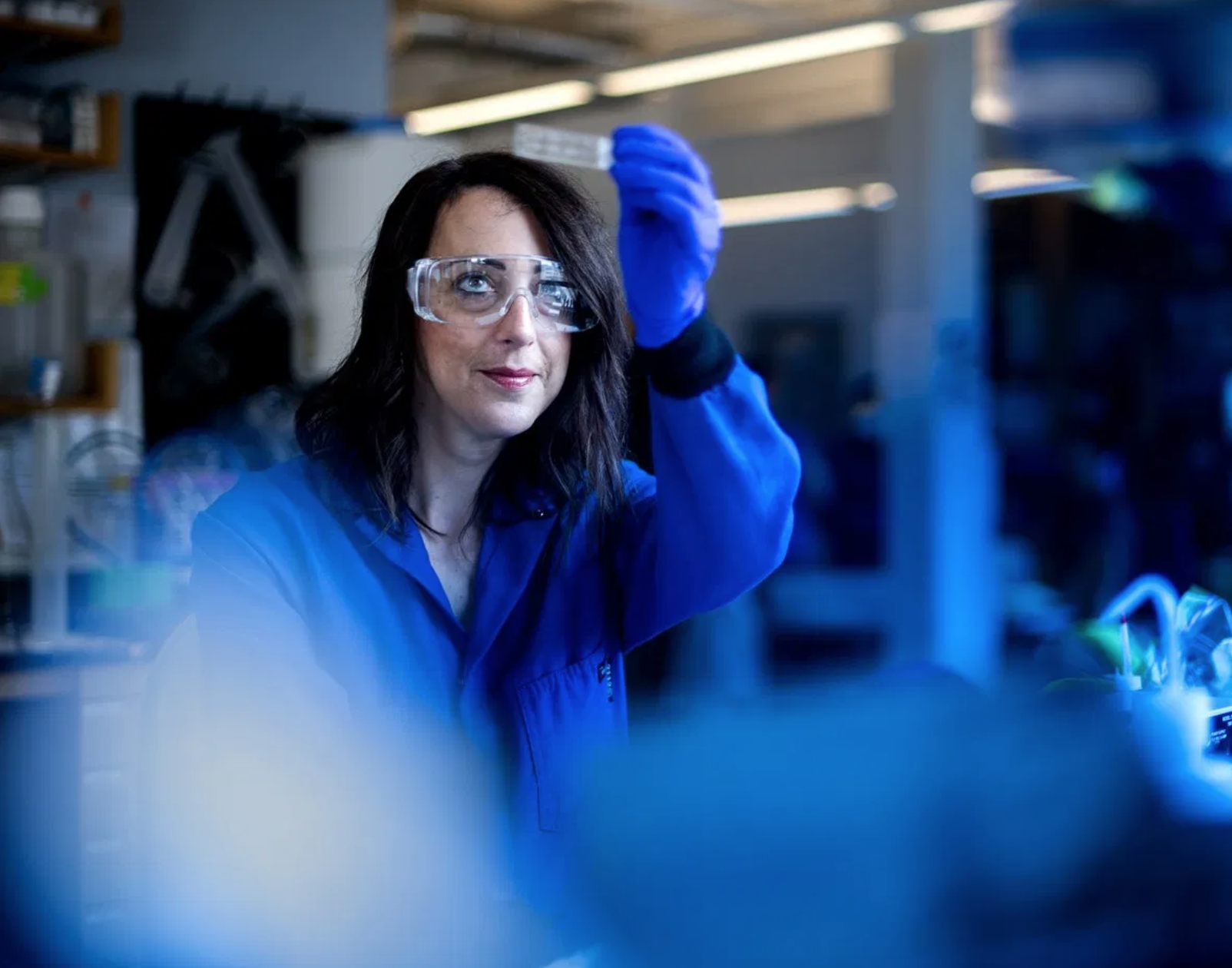
Interested in working with us?
Co-op Experiences

PreMed & PreHealth
Our PreMed and PreHealth Advising program offers personalized expertise to COS students pursuing careers in health careers. This comprehensive program includes application guidance, workshops and presentations, course mapping and more.

Degree Options
Undergraduate, combined majors, behavioral neuroscience, bs learn more, behavioral neuroscience, bs, behavioral neuroscience and design, bs learn more, behavioral neuroscience and design, bs, behavioral neuroscience & philosophy, bs learn more, behavioral neuroscience & philosophy, bs, computer science and behavioral neuroscience, bs learn more, computer science and behavioral neuroscience, bs, data science & behavioral neuroscience, bs learn more, data science & behavioral neuroscience, bs, behavioral neuroscience minor learn more, behavioral neuroscience minor.
Interested in our undergraduate offerings? Apply Today!
Reviews major experimental approaches and key concepts used in behavioral neurobiology. Topics covered include spatial orientation and sensory guidance, neuronal control of motor output, neuronal processing of sensory information, sensorimotor integration, neuromodulation, circadian rhythms and biological clocks, behavioral physiology of large-scale navigation, neurobiology of communication, and cellular mechanisms of learning and memory.
Explores our understanding of the physiological and cognitive aspects of fear, from early theories of emotion to current research in both humans and animal models. Emphasizes linking brain structure to function—how do different brain regions contribute to fear processing and expression? Also focuses on psychiatric illnesses whose symptoms suggest a maladaptive fear response, such as post-traumatic stress disorder and phobias.
Presents an overview of the field of behavioral endocrinology from a psychological perspective. Examines how hormones influence brain structure and function; how hormones affect behavior and vice versa; sex differences in brain and behavior; and the role of hormones in mood disorders, cognition, and stress.

Parrots love playing tablet games. That’s helping researchers understand them.

Q&A with Lyric Westlund COS '25, Science Connects to Innovation Scholarship Recipient

Student Club Spotlight: Community Palette

A research internship at a global pharmaceutical changed this former college basketball player’s career

Northeastern co-op is a teacher, mentor, big sister and friend to 25 young women in a Cambodian dormitory
- Skip to Header
- Motor Imagery Exercises
- Visual Imagery Exercises
- Brain Effects of High-Intensity Exercise in Parkinson's Disease
- Measuring Synaptic Density in Parkinson's Disease with SV2A PET Imaging
- Dopamine Transporter Scan-Based Disease Progression Models for Early Parkinson's Disease
- Publications
- News and Events
INFORMATION FOR
- Residents & Fellows
- Researchers
Michael J Higley, MD/PhD
Contact information.
- Office 203.785.4301
- Email [email protected]
Lab Location
- 100 College Street Rm 1020 New Haven, CT 06510
Office Location
- 100 College Street Rm 1030 New Haven, CT 06510
Research & Publications
Appointments.
- Neuroscience
Dr. Higley studied behavioral neuroscience at Cornell University. He then completed his MD and PhD in the MSTP Program and the laboratory of Dr. Diego Contreras at the University of Pennsylvania. He continued his scientific training as a postdoctoral fellow with Dr. Bernardo Sabatini at Harvard Medical School. In 2010, Dr. Higley joined the faculty of the Yale Department of Neuroscience and the Program in Cellular Neuroscience, Neurodegeneration, and Repair (CNNR). He was promoted to Associate Professor with tenure in 2020. He has received numerous honors for his research, including a Sloan Research Fellowship, a Klingenstein Fellowship, and most recently the NIH Director's Pioneer Award. Dr. Higley has a secondary appointment in the Department of Biomedical Engineering and is a member of the Wu Tsai Institute. He also serves as an Associate Director for the Yale MD-PhD Program.
Education & Training
- Postdoctoral Fellow, Sabatini Lab Harvard Medical School (2010)
- MD/PhD University of Pennsylvania (2007)
- BA Cornell University (1998)
Honors & Recognition
Departments & organizations.
- Interdepartmental Neuroscience Program
- Kavli Institute for Neuroscience
- MD-PhD Program
- Neural Disorders
- Neuroscience Track
- Program in Cellular Neuroscience, Neurodegeneration and Repair
- Swartz Program in Theoretical Neurobiology
- Wu Tsai Institute
- Yale Combined Program in the Biological and Biomedical Sciences (BBS)
- Yale Ventures

The Department of Neurobiology, Physiology & Behavior supports our underrepresented students and rejects all forms of discrimination. Racial Trauma Resources
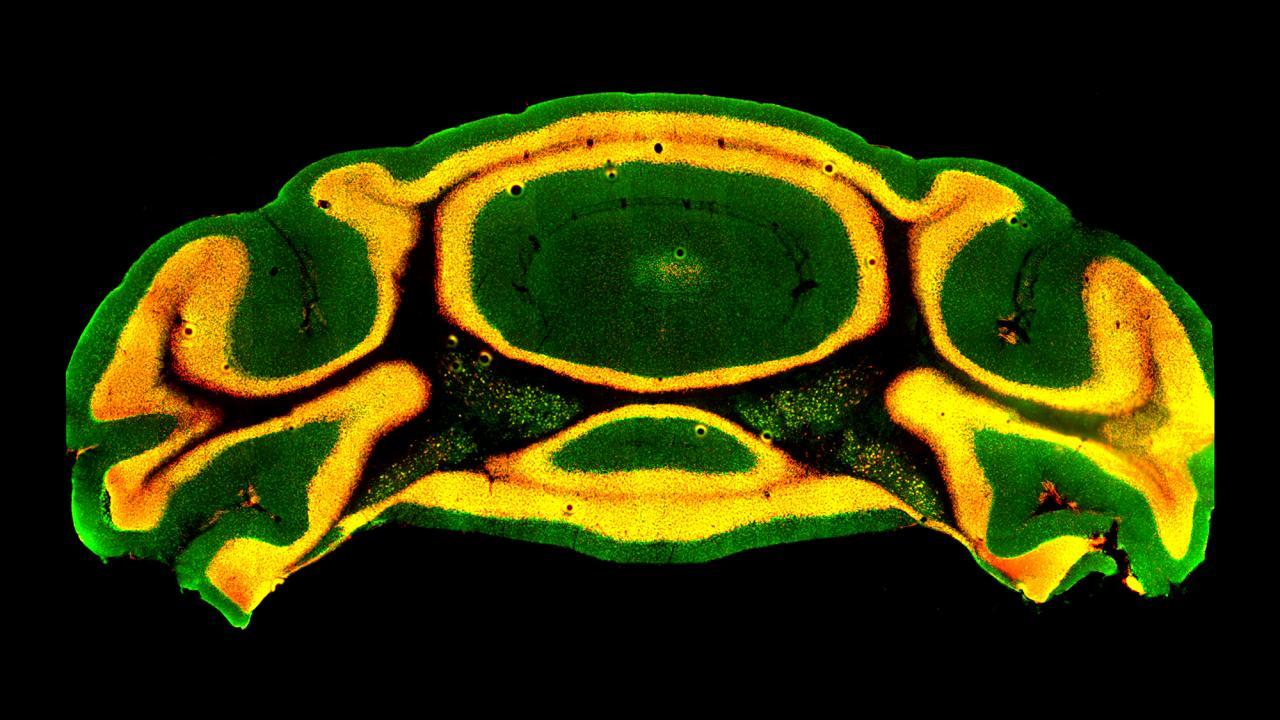
New Research Suggests Cerebellum May Play Important Role in Autism
Nimh grant will fund studies on how autism risk gene impacts a crucial, but long-overlooked brain area.
- by Douglas Fox
- April 05, 2024
Researchers in the College of Biological Sciences have received a grant to study the role of the cerebellum in autism. “We need a more holistic understanding of the brain circuits that drive this disorder,” says Alex Nord, an associate professor of neurobiology, physiology and behavior (NPB), and a researcher at the Center for Neuroscience (CNS). “The cerebellum is a key component that has been largely overlooked until recently.”
Nord partnered with Diasynou Fioravante, also an associate professor of NPB and CNS researcher, and received an R21 grant from the National Institute of Mental Health (NIMH). Announced in November, it will provide $435,000 of funding over the next two years.
With this grant, they will study how a potent autism risk gene, called chromodomain helicase DNA binding protein 8 ( Chd8 ), alters function in the cerebellum, which plays a crucial role in physical movement, and how this drives autism-like behaviors. Their research ties together two emerging trends in autism research.
Read the full story here .
Behavioral Neuroscience
behavior, Drosophila melanogaster, genetics, neuroscience
Our Research
The Behavioral Neuroscience stream investigates gene function in behavior and maps neuron circuits of the brain to behavior in the fruitfly (Drosophila melanogaster) model system. Researchers achieve this by reducing or eliminating the expression of hypothesized genes for certain fly behaviors and studying the effect of the manipulation on the behaviors.
To study neuron function, we also use optogenetics to activate or reduce activity of defined neurons and explore the outcome of the manipulation. These manipulations are achieved on a genetic level in the organism using transmission genetics to create the required transgene and mutant combinations in the fly.
Our Strategy
We investigate for gaps in knowledge in the field of neuroscience, develop approaches to address those gaps, generate the knowledge required and publish and disseminate to science.
Students focus on the development of experimental design, critical/ analytical thinking and interpretation of literature, and data analysis. In addition, our researchers develop teamwork and collaborative skills through wet lab experimentation and written and verbal scientific communication.
Behavioral Neuroscience Research Techniques
- data analysis using R
- optogenetics
- fly transmission genetics
- fly behaviors
Our research generates knowledge of genes, signaling pathways and biological mechanisms underlying behavior. We investigate several behaviors such as alcohol sensitivity, courtship, aggression and learning and memory. Many genes and pathways involved in behavior and disease in humans have analogous pathways in the Drosophila system. This, along with its outstanding gene manipulation toolkit, makes this organism an optimal model to study behavioral traits and diseases in humans.
Thilini Wijesekera
- Assistant Professor of Practice
- Freshman Research Initiative
- College of Natural Sciences
Research Educator | Behavioral Neuroscience Stream
Nigel Atkinson
- Neuroscience
- Spring Course Schedule
- Fall Course Credit
- Wijesekera TP, Wu Z, Stephens NP, Godula R, Lew LK, Atkinson NS. A Non-Nuclear NF-κB Modulates Alcohol Sensitivity But Not Immunity . J Neurosci. 2022 . 42 , 3329-3343.

Interdisciplinary Training in the Neurosciences
The USC Neuroscience Graduate Program (NGP) is the only university-wide PhD program at USC. NGP students and faculty come from a variety of academic backgrounds to study questions spanning the spectrum of modern neuroscience research. We provide a highly supportive, research-intensive training experience designed to prepare students for a variety of successful careers. Learn more »
Not a graduate student? Learn about the USC Neuroscience Undergraduate Program .
Upcoming USC Events
Telescope detects unprecedented behavior from nearby magnetar
Researchers using Murriyang, CSIRO's Parkes radio telescope, have detected unusual radio pulses from a previously dormant star with a powerful magnetic field.
New results published today in Nature Astronomy describe radio signals from magnetar XTE J1810-197 behaving in complex ways.
Magnetars are a type of neutron star and the strongest magnets in the Universe. At roughly 8,000 light years away, this magnetar is also the closest known to Earth.
Most are known to emit polarised light, though the light this magnetar is emitting is circularly polarised, where the light appears to spiral as it moves through space.
Dr Marcus Lower, a postdoctoral fellow at Australia's national science agency -- CSIRO, led the latest research and said the results are unexpected and totally unprecedented.
"Unlike the radio signals we've seen from other magnetars, this one is emitting enormous amounts of rapidly changing circular polarisation. We had never seen anything like this before," Dr Lower said.
Dr Manisha Caleb from the University of Sydney and co-author on the study said studying magnetars offers insights into the physics of intense magnetic fields and the environments these create.
"The signals emitted from this magnetar imply that interactions at the surface of the star are more complex than previous theoretical explanations."
Detecting radio pulses from magnetars is already extremely rare: XTE J1810-197 is one of only a handful known to produce them.
While it's not certain why this magnetar is behaving so differently, the team has an idea.
"Our results suggest there is a superheated plasma above the magnetar's magnetic pole, which is acting like a polarising filter," Dr Lower said.
"How exactly the plasma is doing this is still to be determined."
XTE J1810-197 was first observed to emit radio signals in 2003. Then it went silent for well over a decade. The signals were again detected by the University of Manchester's 76-m Lovell telescope at the Jodrell Bank Observatory in 2018 and quickly followed up by Murriyang, which has been crucial to observing the magnetar's radio emissions ever since.
The 64-m diameter telescope on Wiradjuri Country is equipped with a cutting edge ultra-wide bandwidth receiver. The receiver was designed by CSIRO engineers who are world leaders in developing technologies for radio astronomy applications.
The receiver allows for more precise measurements of celestial objects, especially magnetars, as it is highly sensitive to changes in brightness and polarisation across a broad range of radio frequencies.
Studies of magnetars such as these provide insights into a range of extreme and unusual phenomena, such as plasma dynamics, bursts of X-rays and gamma-rays, and potentially fast radio bursts.
- Space Telescopes
- Space Exploration
- Astrophysics
- Cosmic Rays
- Extrasolar Planets
- Radio telescope
- Green Bank Telescope
- Active optics
- European Southern Observatory
- Spitzer space telescope
- Ultimate fate of the universe
- Shape of the Universe
Story Source:
Materials provided by CSIRO Australia . Note: Content may be edited for style and length.
Journal Reference :
- Marcus E. Lower, Simon Johnston, Maxim Lyutikov, Donald B. Melrose, Ryan M. Shannon, Patrick Weltevrede, Manisha Caleb, Fernando Camilo, Andrew D. Cameron, Shi Dai, George Hobbs, Di Li, Kaustubh M. Rajwade, John E. Reynolds, John M. Sarkissian, Benjamin W. Stappers. Linear to circular conversion in the polarized radio emission of a magnetar . Nature Astronomy , 2024; DOI: 10.1038/s41550-024-02225-8
Cite This Page :
Explore More
- Big-Eyed Marine Worm: Secret Language?
- Unprecedented Behavior from Nearby Magnetar
- Soft, Flexible 'Skeletons' for 'Muscular' Robots
- Toothed Whale Echolocation and Jaw Muscles
- Friendly Pat On the Back: Free Throws
- How the Moon Turned Itself Inside Out
- A Welcome Hug Is Good for Your Health
- Climate Change Threatens Antarctic Meteorites
- Precise Measurement of Our Expanding Universe
- Little Research On 'Polycrisis' Humanity Faces
Trending Topics
Strange & offbeat.

An official website of the United States government
Here’s how you know
Official websites use .gov A .gov website belongs to an official government organization in the United States.
Secure .gov websites use HTTPS A lock ( Lock Locked padlock icon ) or https:// means you’ve safely connected to the .gov website. Share sensitive information only on official, secure websites.

The NIAAA is the lead agency for U.S. research on the causes, consequences, prevention and treatment of alcohol use disorder and alcohol-related problems.
National Institute on Alcohol Abuse and Alcoholism (NIAAA)
Laboratory of behavioral and genomic neuroscience.

Senior Investigator
Andrew Holmes, Ph.D.
Contact Information
- Lab: +1 301 402 3519
- Fax: +1 301 480 1952
National Institute on Alcohol Abuse and Alcoholism 5625 Fishers Lane, Room 2N09 Rockville , MD 20852
Overview of the Lab
The overarching mission of the lab is to understand the neural basis of cognitive and emotional regulation and how these critical mental processes are mediated by discrete neural circuits and moderated in function by genetic variation and environmental insults, including stress and alcohol.

Research Projects
The mission of the Laboratory of Behavioral and Genomic Neuroscience is to contribute to a deeper understanding of the causes of alcoholism and comorbid neuropsychiatric conditions, notably stressor, trauma and anxiety disorders. Our goal is to elucidate the neural basis of these devastating diseases and help identify new directions for their prevention and effective treatment. To this end, we integrate behavioral measures with state-of-the-art methods for monitoring and manipulating neural functions in order to examine how environmental insults shape brain circuits to modify behavior.
Lab Members

Staff Scientist
Ozge Gunduz-Cinar, Ph.D.

Olena Bukalo, Ph.D.

Postdoctoral Fellow
Patrick Piantadosi, Ph.D.

Ruairi O`Sullivan, Ph.D.
ruairi.o'[email protected]

Post-baccalaureate
Melissa Wilson, B.S.

Nevin Crow, B.S.

Jeff Goff, B.S.

Hrishikesh Bhagwat, B.S.

Olivia Carpenter, B.A.

Marcelle Halfeld Bauzon, B.A.

Sophie Mosley, B.S.
Selected Publications
Silverstein SE, O'Sullivan R, Bukalo O, Pati D, Schaffer JA, Limoges A, Zsembik L, Yoshida T, O'Malley JJ, Paletzki RF, Lieberman AG, Nonaka M, Deisseroth K, Gerfen CR, Penzo MA, Kash TL, Holmes A (2024). A distinct cortical code for socially learned threat. Nature. 2024 Feb;626(8001):1066-1072 PMID: 38326610
Gunduz-Cinar O, Castillo LI, Xia M, Leer E, Brockway ET, Pollack GA, Bukalo O, Limoges A, Oreizi-Esfahani S, Kondev V, Báldi R, Dong A, Harvey-White J, Cinar R, Kunos G, Li Y, Zweifel LS, Patel S, Holmes A (2023). A cortico-amygdala circuit substrate for endocannabinoid modulation of fear extinction. Neuron 111:3053-3067. https://www.sciencedirect.com/science/article/pii/S0896627323004828?via%3Dihub
Hagihara KM, Bukalo O, Zeller M, Aksoy-Aksel A, Karalis N, Limoges A, Rigg T, Campbell T, Mendez A, Weinholtz C, Mahn M, Zweifel LS, Palmiter RD, Ehrlich I, Lüthi A, Holmes A (2021). Intercalated amygdala clusters orchestrate a switch in fear state. Nature 594:403-407. https://www.ncbi.nlm.nih.gov/pmc/articles/PMC8402941/
Bukalo O, Pinard CR, Silverstein S, Brehm C, Hartley ND, Whittle N, Colacicco G, Busch E, Patel S, Singewald N, Holmes A (2015). Prefrontal inputs to the amygdala instruct fear extinction memory formation. Science Advances 1:e1500251. https://www.ncbi.nlm.nih.gov/pmc/articles/PMC4618669/
Halladay LR, Kocharian A, Piantadosi PT, Authement M, Lieberman AG, Coden K, Spitz NA, Glover L, Costa VD, Alvarez V, Holmes A (2020). Prefrontal regulation of punished ethanol self-administration. Biological Psychiatry 87:967-968. https://www.ncbi.nlm.nih.gov/pmc/articles/PMC7217757/
Sengupta A, Holmes A (2019). A discrete dorsal raphe to basal amygdala 5-HT circuit calibrates aversive memory. Neuron 103:489-505. https://www.ncbi.nlm.nih.gov/pmc/articles/PMC6687558/
Other Lab Resources
Section alumni.
Maya Xia, B.A., currently at Columbia University, MD/PhD student
Elise Van Leer, B.S., currently at Emory University, MD student
Sarah Perry, B.S., currently at University of Maryland, PhD student
Rodrigo Sandon Veliz, B.S., currently at University of Maryland, B.S. student
Sydney Zimmerman, B.S.
Victoria Offenberg, B.S. , currently a Research Data Specialist at Dana Farber Cancer Institute in Boston, MA
Shana Silverstein, Ph.D., currently postdoctoral fellow at the National Institute of Neurological Disorders and Stroke (NINDS)
Leo Zsembik, BS, currently at University of California San Francisco, graduate student
Laura Castillo, BA, currently at University of Maryland, graduate student
Kendall Coden, currently at Stanford University Masters in Laboratory Animal Sciences
Hyesun Choi, BS, currently at the University of New Mexico School of Medicine, MD Student
Adriana Mendez, BS, Mount Sinai PhD Program in Neuroscience
Chase Weinholtz, BA, Washington University PhD Program in Neuroscience
Sarvar Oreizi-Esfahani, BS, currently at Oakland University William Beaumont School of Medicine, MD Student
Sawyer Smith, BS, Brown University PhD Program in Pathobiology
Tiffany Campbell, BA, DePaul University Masters in Human Computer Interaction
Tanner Rigg, BA, currently teaching English in Thailand with CIEE
Nathen Spitz, BA , currently at Carver College of Medicine, University of Iowa, Iowa City, IA, MD Student
Mark Yde, BA , currently working at STEMCELL Technologies
Kerry McFadden, BA, currently at University College Dublin, Ireland, MA in History of Medicine Student
Mio Nonaka, PhD, currently at Department of Molecular Genetics, Weizmann Institutes of Science, Rehovot, Israel
Takayuki Yoshida, PhD , currently Assistant Professor, Department of Neuropharmacology, Hokkaido University, Sapporo, Japan [email protected]
Will Taylor, BA, currently at the University of Southern California Neuroscience Graduate Program, PhD Student
Gabrielle Pollack, BA, currently at Zucker School of Medicine at Hofstra/Northwell, Hempstead, NY, MD Student
Abby Lieberman, BA, currently at The University of Pennsylvania, graduate student
Ayesha Sengupta, PhD, currently postdoctoral fellow at National Institute on Drug Abuse (NIDA)
Lucas Glover, PhD, currently postdoctoral fellow at John Hopkins University, Baltimore, MD, in Michaela Gallagher's group
Lindsay Halladay , PhD, currently Assistant Professor of Psychology, Santa Clara University, https://www.scu.edu/cas/psychology/faculty-and-staff/lindsay-halladay/ [email protected]
Emma Brockway , BA, currently at the University of Texas at Austin, PhD student in Graduate School in Neuroscience
Abby Postle , BS, currently at the University of Maryland School of Medicine MD/PhD student
Adrina Kocharian, BS, currently at the University of Minnesota School of Medicine, MD/PhD student
Aaron Limoges , BS, currently at the Columbia University in the city of New York, PhD student
Elizabeth Kirby, currently working at the FDA
Anna Lipkin, BS, currently at the University of California, San Francisco (UCSF) PhD student
Courtney Pinard, PhD, Manager of Educational and Career Development Programs, American Association of Immunologists [email protected]
Anna Radke, PhD, Assistant Professor of Psychology, Miami University www.aradlab.com/ [email protected]
Hadley Bergstrom, PhD , Assistant Professor, Department of Psychology, Vassar College https://pages.vassar.edu/bergstromlab/ [email protected] https://www.vassar.edu/faculty/habergstrom/ LabTV Interview with Hadley Bergstrom
Katie Kaugars, BS , currently at Albert Einstein College of Medicine MD/PhD student LabTV Interview with Katie Kaugars
Nick Jury, PhD, currently Science Policy Analyst in the Office of Science Policy, Engagement, Education, and Communications at the National Heart, Lung, and Blood Institute within the National Institutes of Health [email protected] LabTV Interview with Nick Jury
Maxine Reger, PhD
Erica Busch, MS
Erica Sagalyn, MA , currently at The Bridge, New York City, NY
Charles Pickens, PhD , currently tenured faculty, Department of Psychology, Kansas State University
Shaun Flynn, MD , currently resident at Brown University
Munisa Bachu, BA
Marguerite Camp, BS , currently Senior Associate in the Public Sector Practice at PricewaterhouseCoopers, Washington DC
Sophie Masneuf, PhD, currently post-doctoral fellow, Zurich University
Giovanni Colacicco, MD, PhD, currently Senior Scientist and Senior Lecturer, Institute of Anatomy, University of Zurich
Rachel Daut, PhD, currently postdoc at University of Colorado at Boulder
Carly Kiselycznyk, PhD , currently at Yale University
Paul Fitzgerald, PhD, currently postdoctoral fellow at University of Michigan
Carolyn Graybeal, PhD, currently a fellow at the National Academy of Sciences
Jonathan Brigman, PhD , currently Associate Professor & Regents’ Lecturer, Department of Neurosciences, University of New Mexico, [email protected]
Lauren DePoy, PhD, currently postdoc at University of Pittsburgh
Kathryn MacPherson, BS , currently at Emory University
Daniel Fisher, BS , currently at Northwestern University
Aaron Plitt, BS , currently at University of Texas Southwestern
Alicia Izquierdo, PhD , currently Professor, Department of Psychology, Brain Research Institute, Neuroscience IDP, University of California, Los Angeles, [email protected]
Janel Boyce-Rustay, PhD , currently Senior Director, Regulatory Program Management at Genentech, San Francisco
Rose-Marie Karlsson, PhD , currently at NIMH
Rachel Millstein, PhD , currently Assistant Professor of Psychiatry, Massachusetts General Hospital, Boston, MA
Lisa Wiedholz, BA , currently at Abbott Laboratories
Rebecca Yang, BA , currently at The Mayo Clinic Rochester
Kathryn Hefner, PhD , currently Research Assistant Professor at Uniformed Services University of the Health Sciences, Bethesda, MD
Poonam Mathur, DO, MPH, currently Assistant Professor, University of Maryland School of Medicine
Benjamin Palachick, MD, currently surgical critical care fellow at Cooper University Healthcare in Camden, NJ
Yi-Chyan Chen, MD, PhD, currently Director, Department of Psychiatry, Buddhist Tzu Chi General Hospital, Hualian, Taiwan
Maxine Norcross, BS, currently at NIMH
Tara Wright, BS , currently at University of North Carolina
Michael Feyder, PhD , currently at Brain Modulation Lab, Department of Neurosurgery, University of Pittsburgh, PA
Jessica Ihne Reed, PhD, currently postdoc at NIMH
Susanna Weber, BS , currently at Gottingen University
Lauren Lederle, MD , currently at San Fransisco VA Medical Center
Benita Hurd, MD , currently regional anethesia fellow at Emory University
Collaborators
Dr. Timothy J. Bussey and Dr. Lisa M. Saksida, Robarts Research Institute, Western University; Weblink
Dr. Tom Kash, University of North Carolina; Weblink
Dr. David Lovinger, Dr. Veronica Alvarez, Laboratory for Integrative Neuroscience, NIAAA; Weblink
Dr. Sachin Patel, Vanderbilt University Medical Center; Weblink
Dr. Mario Penzo, Unit on the Neurobiology of Affective Memory, NIMH; Weblink
Dr. Danny Winder, Department of Pharmacology, Vanderbilt University Medical Center; Weblink
niaaa.nih.gov
An official website of the National Institutes of Health and the National Institute on Alcohol Abuse and Alcoholism

COMMENTS
Behavioral Neuroscience ® is a bimonthly, peer-reviewed journal that publishes research articles in the broad field of the neural bases of behavior. A detailed description of the editorial coverage policy appears on the inside of the front cover of each issue. Behavioral Neuroscience publishes direct replications. Submissions should include ...
Behavioral neuroscientists writing in the Horizons in Behavioral Neuroscience Research Topic have laid out a bold path towards leveraging neuroscience to eliminate the stigma of mental health. While there is no direct evidence for neural hardwiring of stigma, stigma is deeply rooted in our emotions and the neural basis for it could throw light ...
The assessment of rodent behavior forms a cornerstone of preclinical assessment in neuroscience research. Nonetheless, the true and almost limitless potential of behavioral analysis has been ...
Understanding the link between brain activity and behavior is among the core interests of neuroscience. Having a better grasp of this relationship will both help scientists understand how the ...
How Human Actions Alter COVID-19 Evolution. A research group using AI and mathematical modeling has discovered that human behavioral responses to COVID-19, like lockdowns and isolation, influence the evolution of the virus. Their study found that SARS-CoV-2 variants became more transmissible early in infection due to these human interventions.
That's really where the fun of this job is, to hear new ideas and see how people discuss and debate them. Health & Medicine. Media Contact. Fred Mamoun: [email protected], 203-436-2643. In a new paper, Yale researchers propose that brain states and brain waves may be two parts of the same occurrence — and they discuss why that matters.
This stimulated a wave of new research and data about the brain's neural circuitry. (Here is a list of the wide range of cutting-edge neuroscience research supported by the BRAIN initiative so far.)
Social and affective neuroscience research takes a multilevel approach to make sense of socioaffective processes, focusing on macro- (for example, social environments and structures), meso- (for ...
Scientific discoveries in the fields of behavioral science and neuroscience often require the time-consuming and challenging task of identifying, classifying, and predicting outcomes from copious ...
Exciting new work published in Nature Neuroscience by Minakuchi and colleagues from the Falkner lab shows how separate inputs into a single brain region can independently affect aggression. Specifically, it explores the role of inputs into a part of the mouse hypothalamus (the ventromedial hypothalamus ventrolateral area, which we will refer to as VMHvl).
Benjamin de Bivort, Harvard University. After many years of research, we still do not completely understand the brains of even the simplest organisms. The human brain with its 80 billion neurons ...
Research Topics. See all (386) Learn more about Research Topics. Part of the world's most cited neuroscience journal series, this journal highlights research in all species that advances our understanding of the neural mechanisms underlying behavioral outcomes.
Abstract. An evolutionary model of personality traits related to cooperative behavior using a large language model. This study aims to demonstrate that Large Language Models (LLMs) can empower research on the evolution of human behavior, based on evolutionary game theory, by using an evolutionary model positing that instructing LLMs with high-level psychological and cognitive character ...
Virtual Reality (VR) is a rapidly maturing technology that offers new and unique solutions to otherwise intractable problems in the study of cognition, behavior and neuroscience. VR removes many of the constraints imposed by laboratory paradigms, allowing us to track cognitive, behavioral and brain responses to naturalistic (or even impossible ...
Their research ties together two emerging trends in autism research. Alex Nord (left) and Diasynou Fioravante, associate professors in the Department of Neurobiology, Physiology and Behavior, and core faculty at the Center for Neuroscience, have received a grant from the National Institute of Mental Health to study how a major autism risk gene ...
Atom. RSS Feed. Neuroscience is a multidisciplinary science that is concerned with the study of the structure and function of the nervous system. It encompasses the evolution, development ...
Abstract. The ways that people set, pursue, and eventually succeed or fail in accomplishing their goals are central issues for consulting psychology. Goals and behavior change have long been the subject of empirical investigation in psychology, and have been adopted with enthusiasm by the cognitive and social neurosciences in the last few decades.
The researchers are currently exploring how the new serotonin derivatives affect behavior in C. elegans and whether similar serotonin metabolites exist in humans. About this neuroscience research news. Author: Aaron Bouchie Source: Boyce Thompson Institute Contact: Aaron Bouchie - Boyce Thompson Institute Image: The image is in the public domain
Quite recently, a neuroscience-informed cognitive-behavioral approach (i.e., "The Waves of the New ABCs") ... According to Bonini et al. , studies of mirror mechanisms will lead to new research avenues in neuropsychiatric conditions in the near future. We are also confident in the increasing use of neuroimaging techniques to refine our ...
Frontiers in Behavioral Neuroscience is a leading multidisciplinary journal that focuses on understanding the neural mechanisms underlying human and animal behavioral outcomes. Led by Field Chief Editor Prof Nuno Sousa (Instituto de Investigação em Ciências da Vida e da Saúde, ICVS, Portugal), Frontiers in Behavioral Neuroscience publishes ...
The behavioral neuroscience and design combined major engages students in an interdisciplinary study across the biology, psychology, and Art + Design departments to integrate fundamental design courses with a strong foundation in the physiological brain mechanisms that give rise to behavioral functions. The latest research in neuroscience and ...
Research & Publications; News; Locations; Download Hi-Res Photo. Appointments. Neuroscience; Biography. Dr. Higley studied behavioral neuroscience at Cornell University. He then completed his MD and PhD in the MSTP Program and the laboratory of Dr. Diego Contreras at the University of Pennsylvania. ... Brain and Behavior Research Foundation ...
Researchers in the College of Biological Sciences have received a grant to study the role of the cerebellum in autism. "We need a more holistic understanding of the brain circuits that drive this disorder," says Alex Nord, an associate professor of neurobiology, physiology and behavior (NPB), and a researcher at the Center for Neuroscience (CNS). "The cerebellum is a key component that ...
Neuroscience and a Little Known 100 Year Old Law From Psychology Says 1 Simple Habit Can Boost Brainpower, Productivity, and Performance New research shares more insight into why music helps the ...
Our Research. The Behavioral Neuroscience stream investigates gene function in behavior and maps neuron circuits of the brain to behavior in the fruitfly (Drosophila melanogaster) model system. Researchers achieve this by reducing or eliminating the expression of hypothesized genes for certain fly behaviors and studying the effect of the ...
The USC Neuroscience Graduate Program (NGP) is the only university-wide PhD program at USC. NGP students and faculty come from a variety of academic backgrounds to study questions spanning the spectrum of modern neuroscience research. We provide a highly supportive, research-intensive training experience designed to prepare students for a ...
Telescope detects unprecedented behavior from nearby magnetar. ScienceDaily . Retrieved April 8, 2024 from www.sciencedaily.com / releases / 2024 / 04 / 240408130116.htm
The mission of the Laboratory of Behavioral and Genomic Neuroscience is to contribute to a deeper understanding of the causes of alcoholism and comorbid neuropsychiatric conditions, notably stressor, trauma and anxiety disorders. ... MA, currently at The Bridge, New York City, NY. Charles Pickens, PhD, currently tenured faculty, Department ...
Neuroscience News Home. Neuroscience News is an independent open access science magazine. Since 2001, we have featured neuroscience research news from labs, universities, hospitals and news departments around the world. Topics include brain research, AI, psychology, neuroscience, mental health and neurotech.